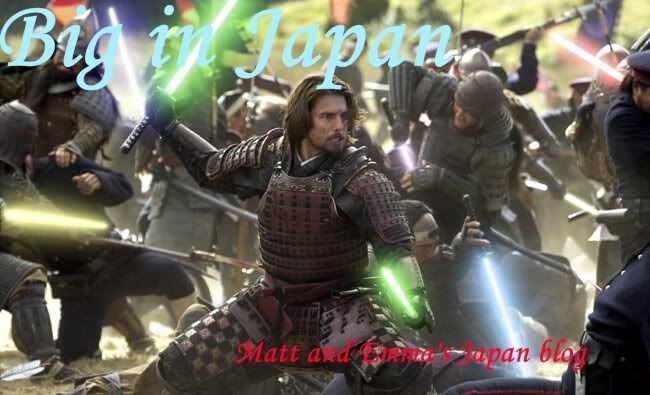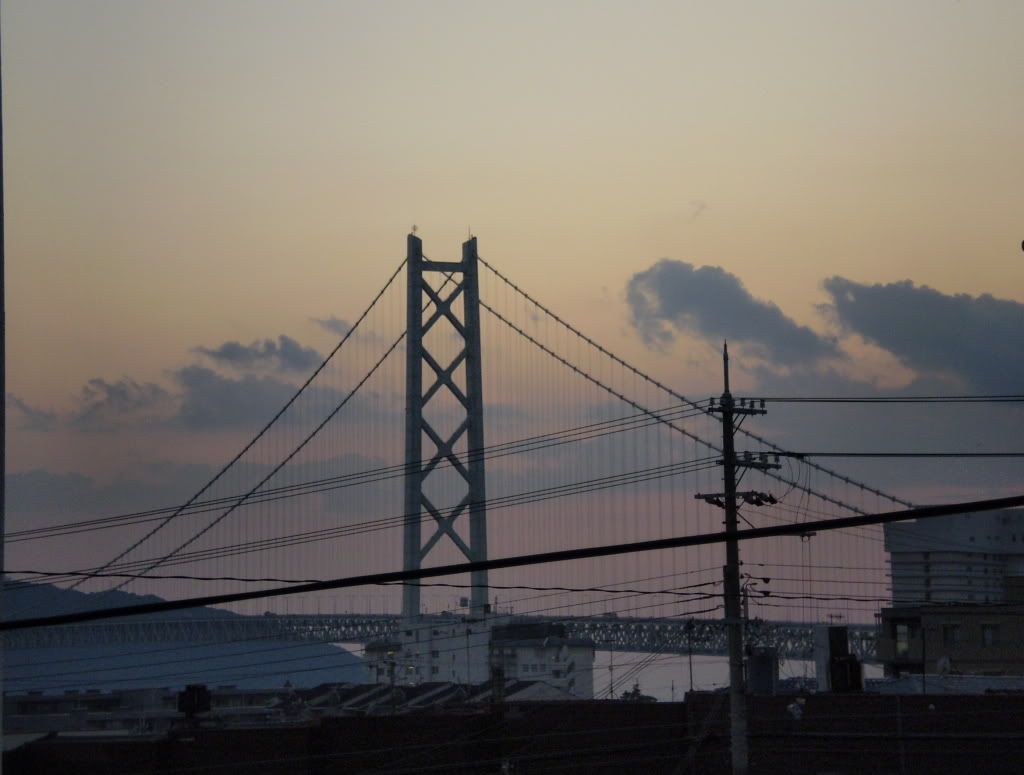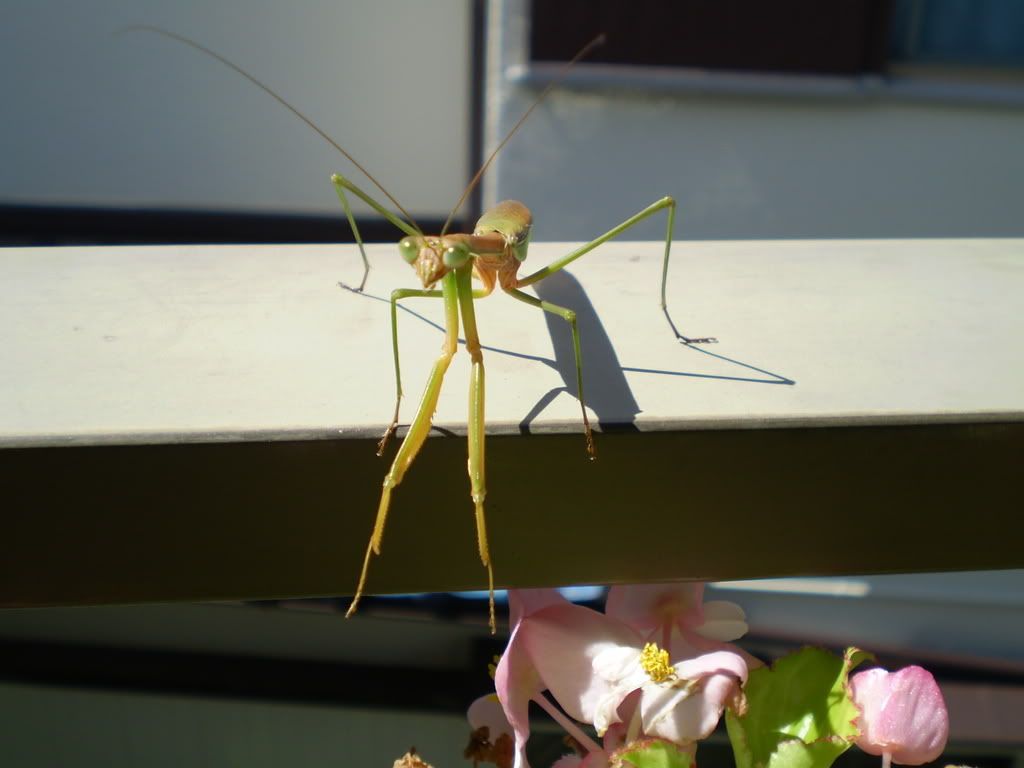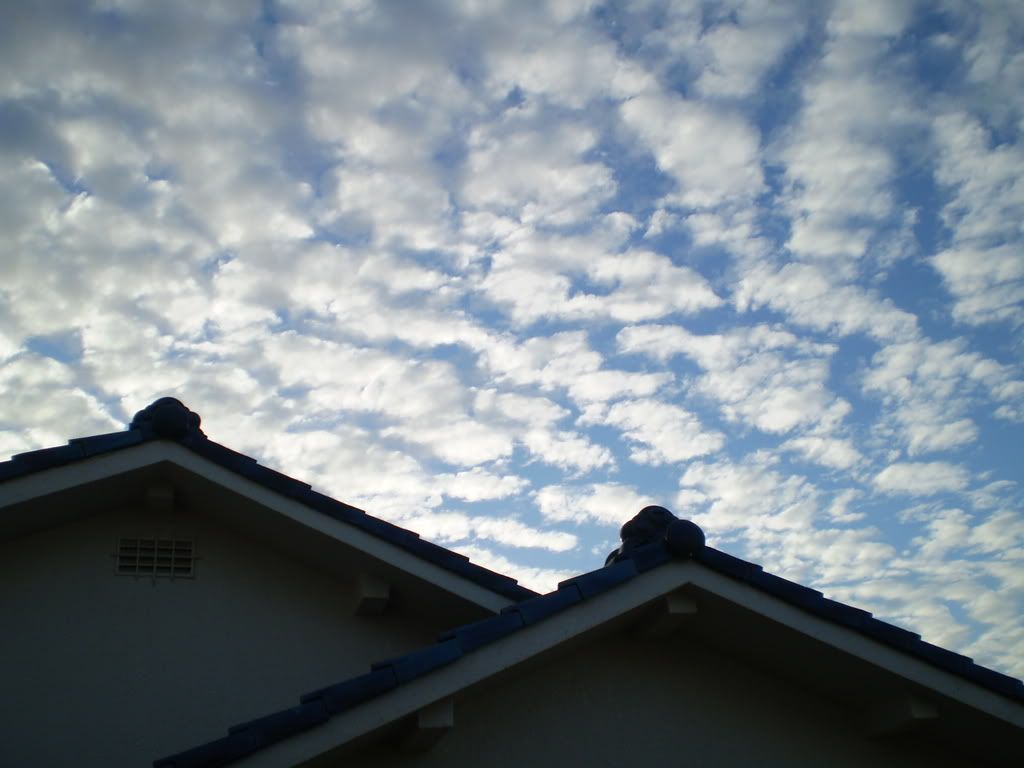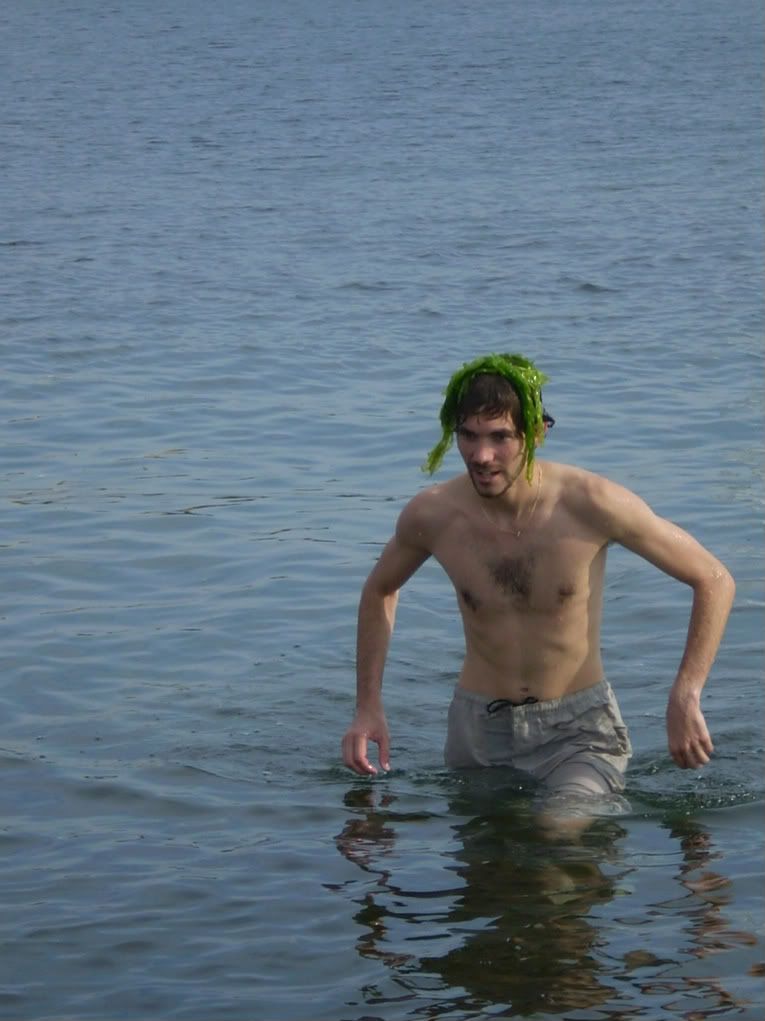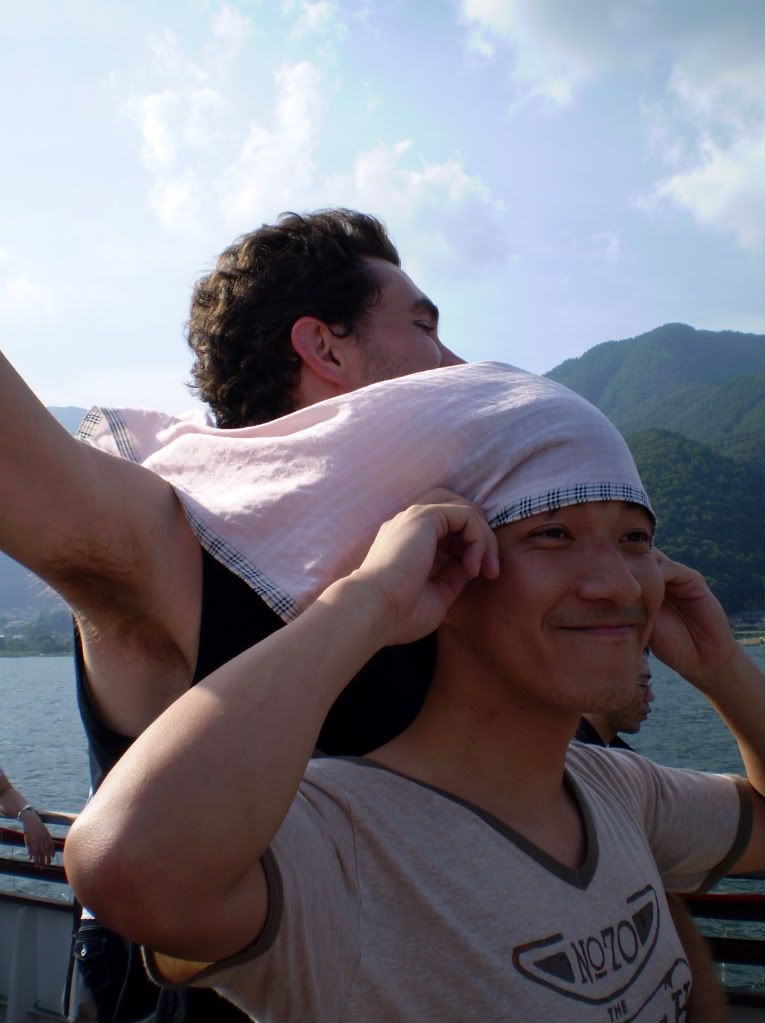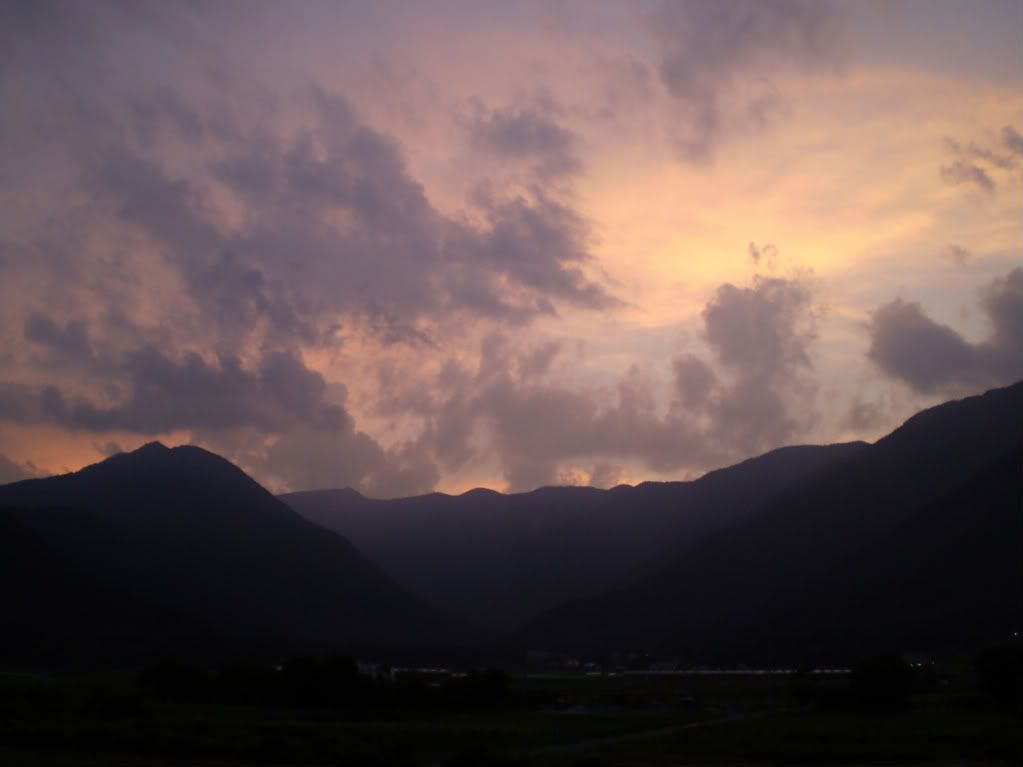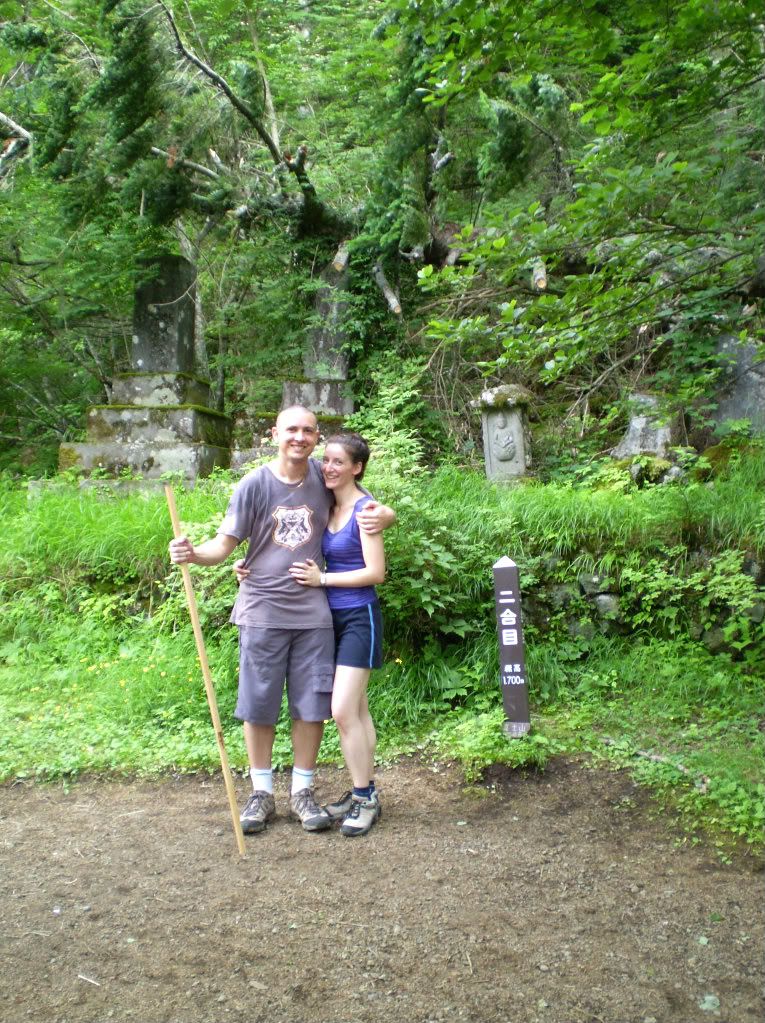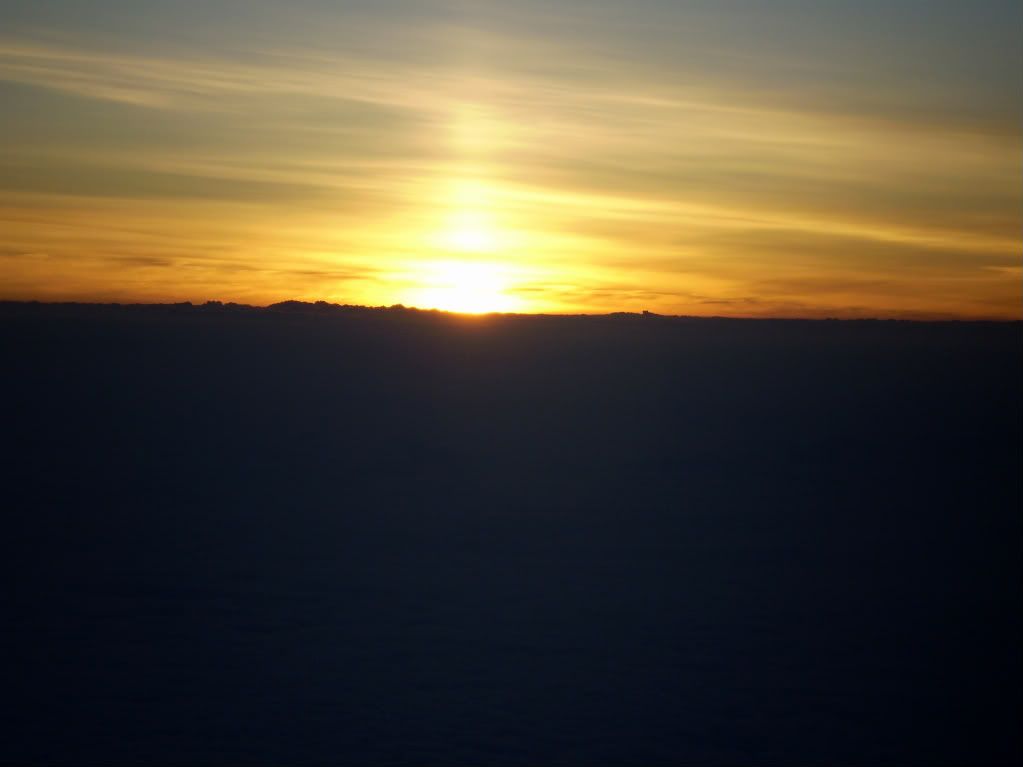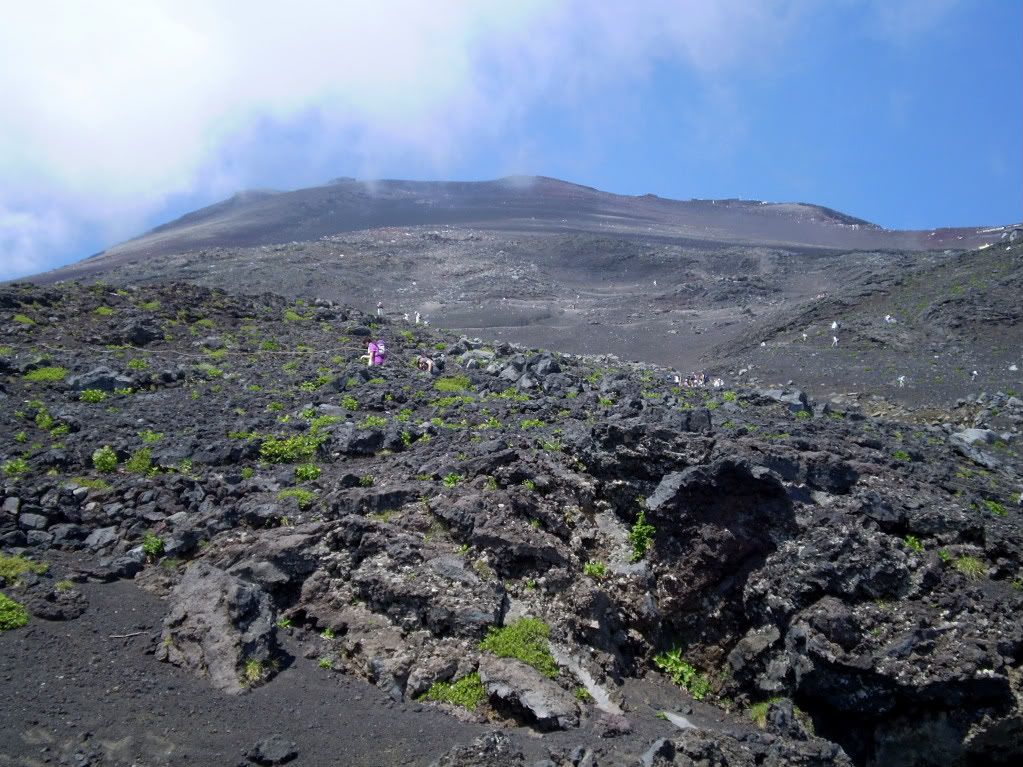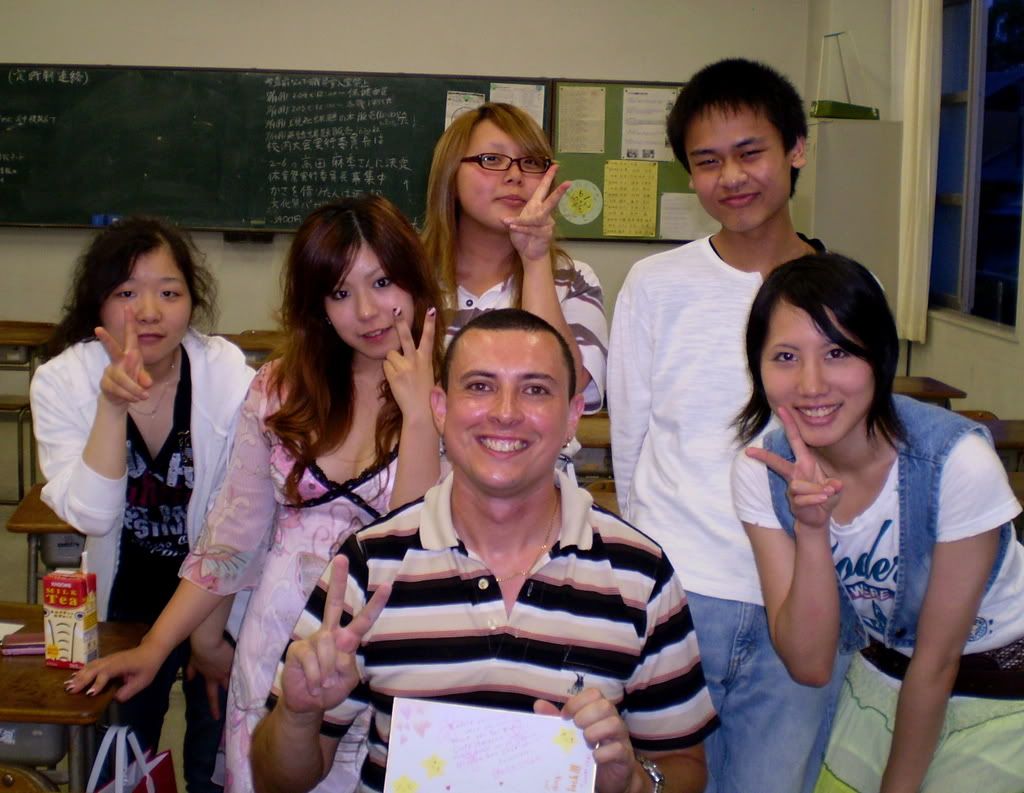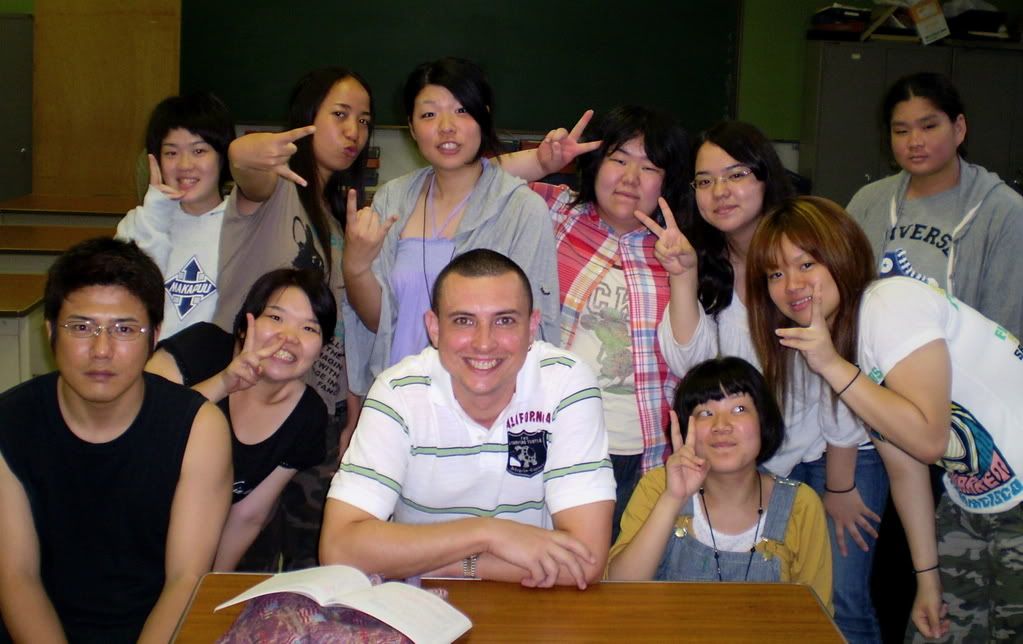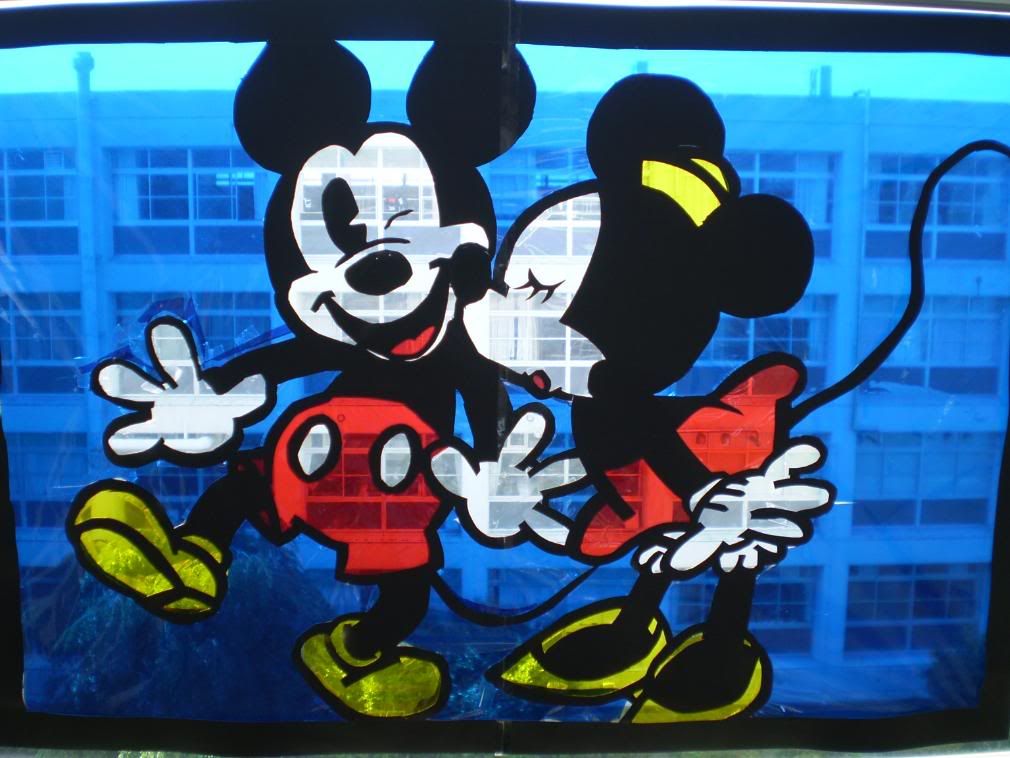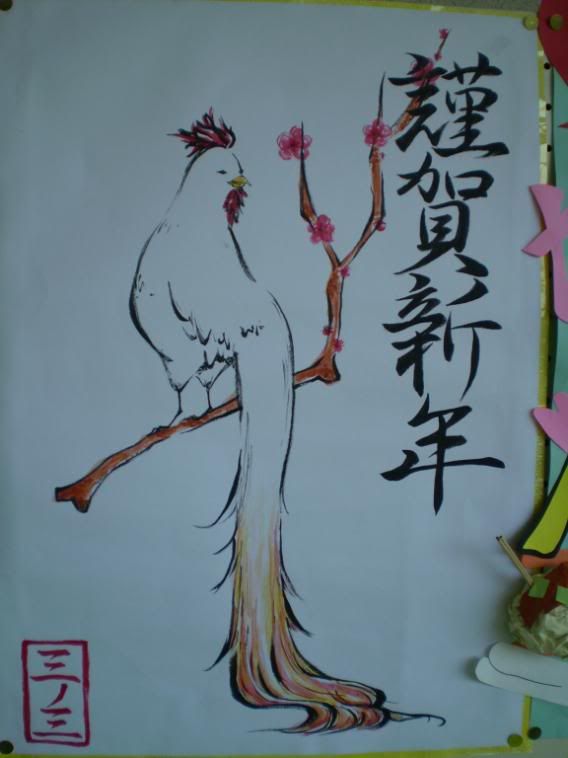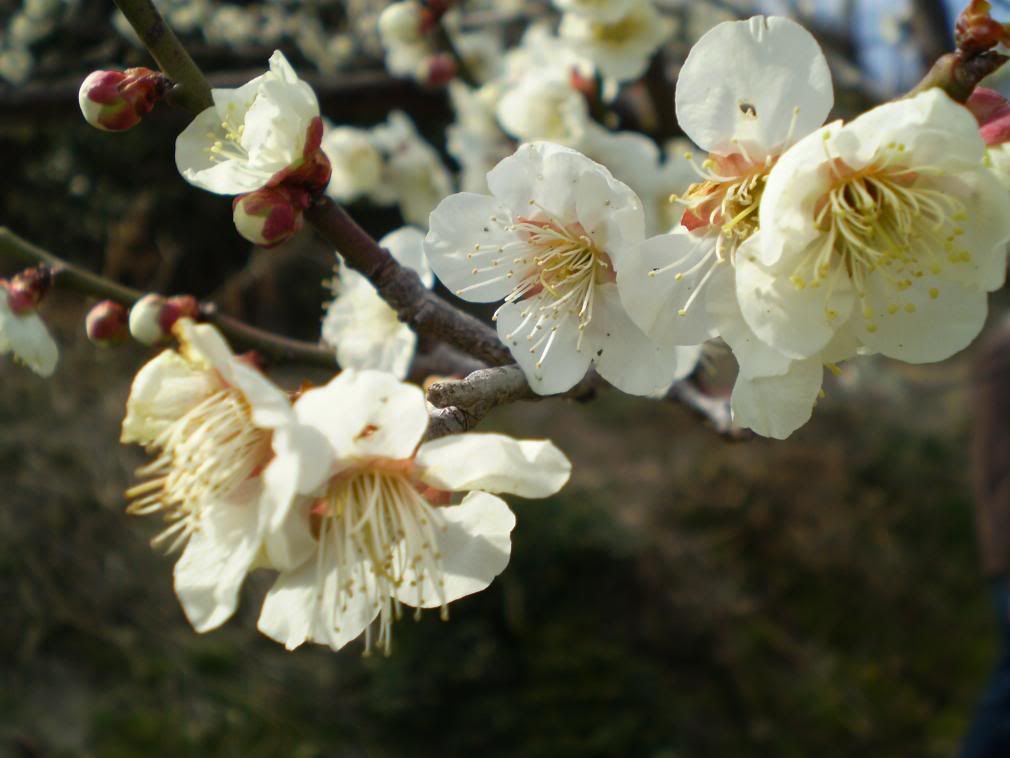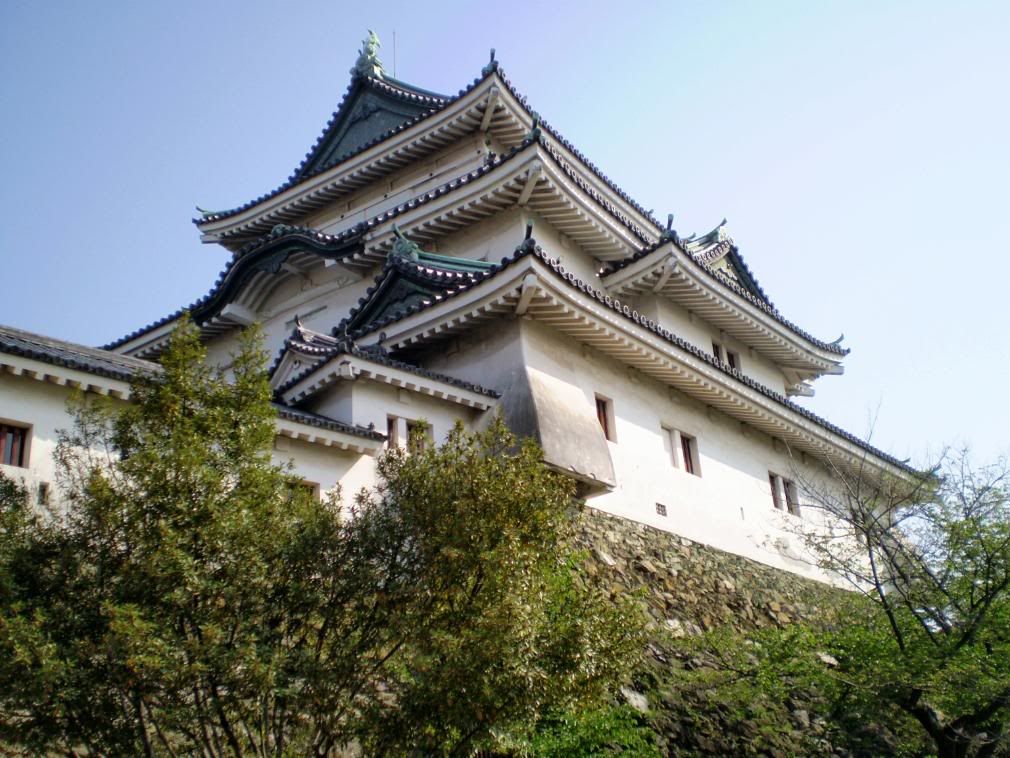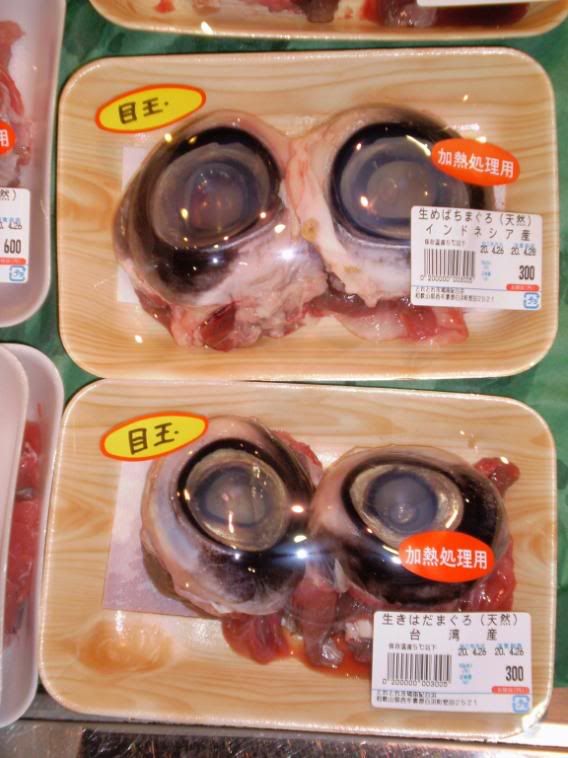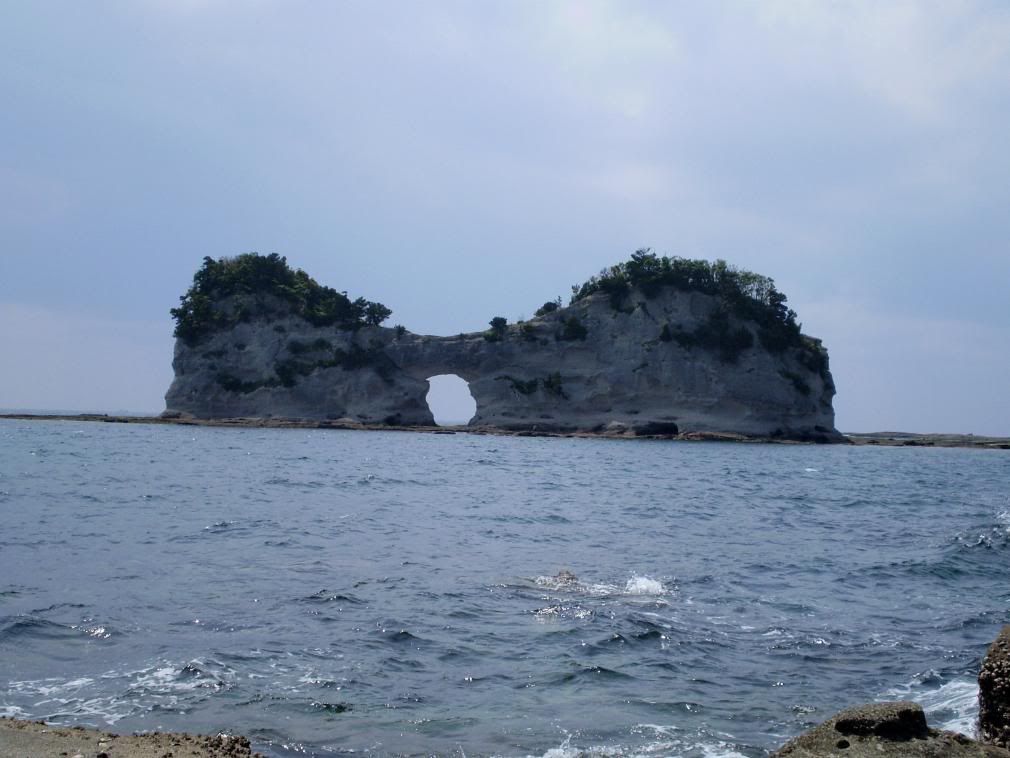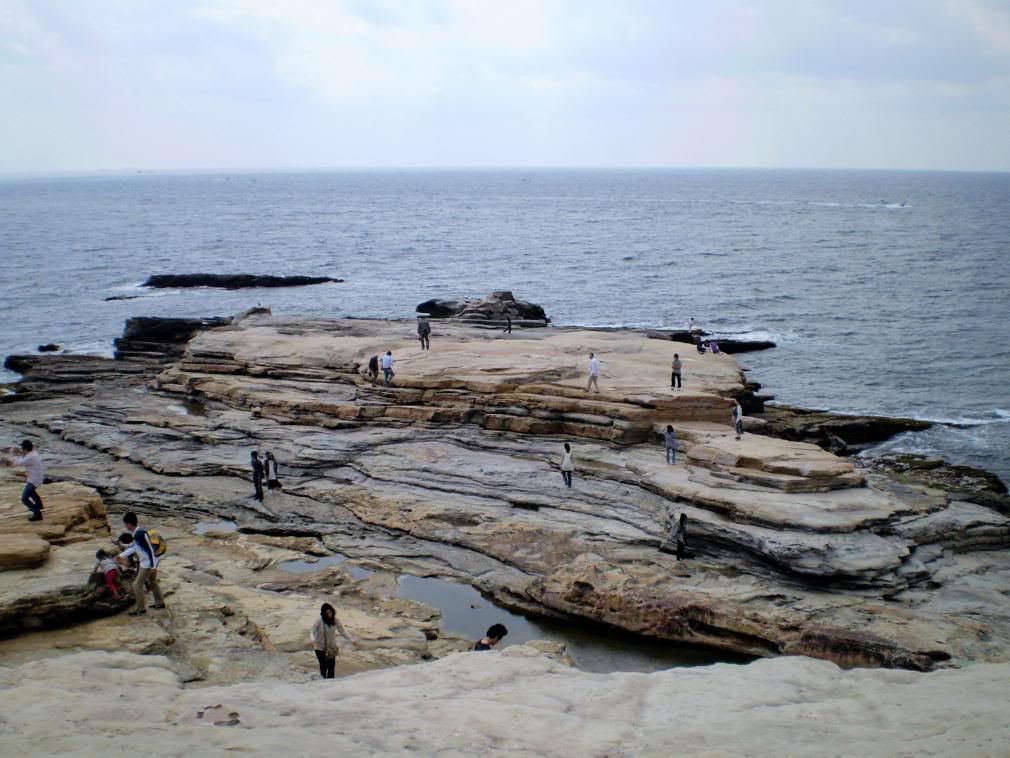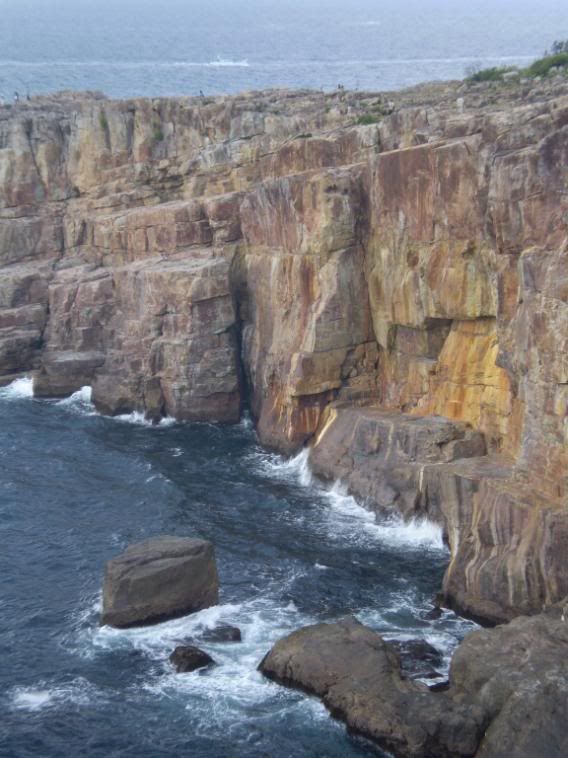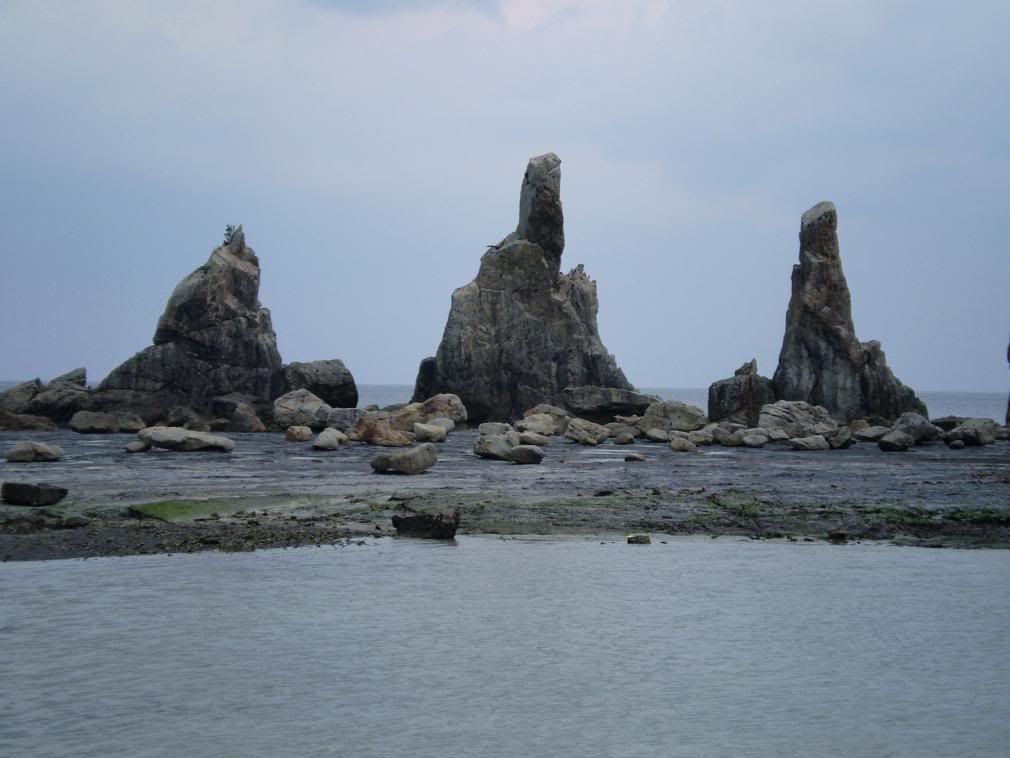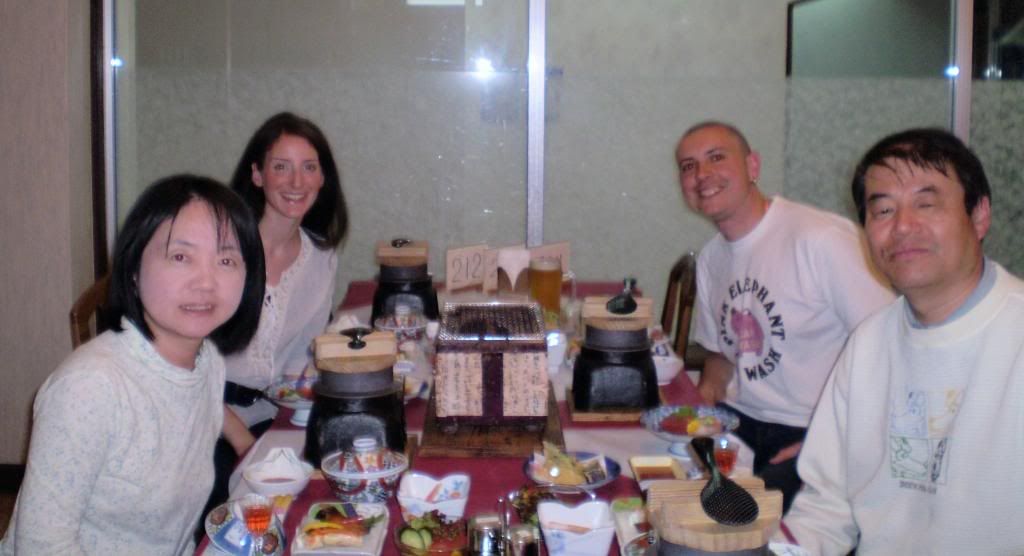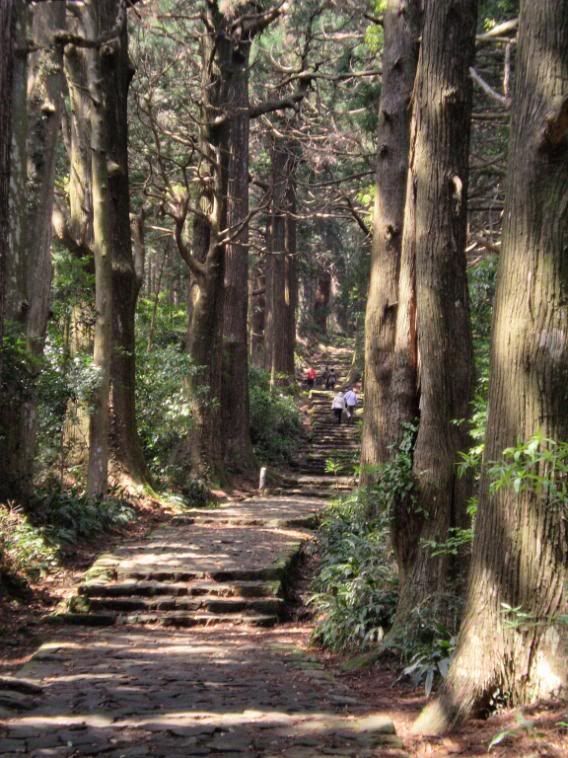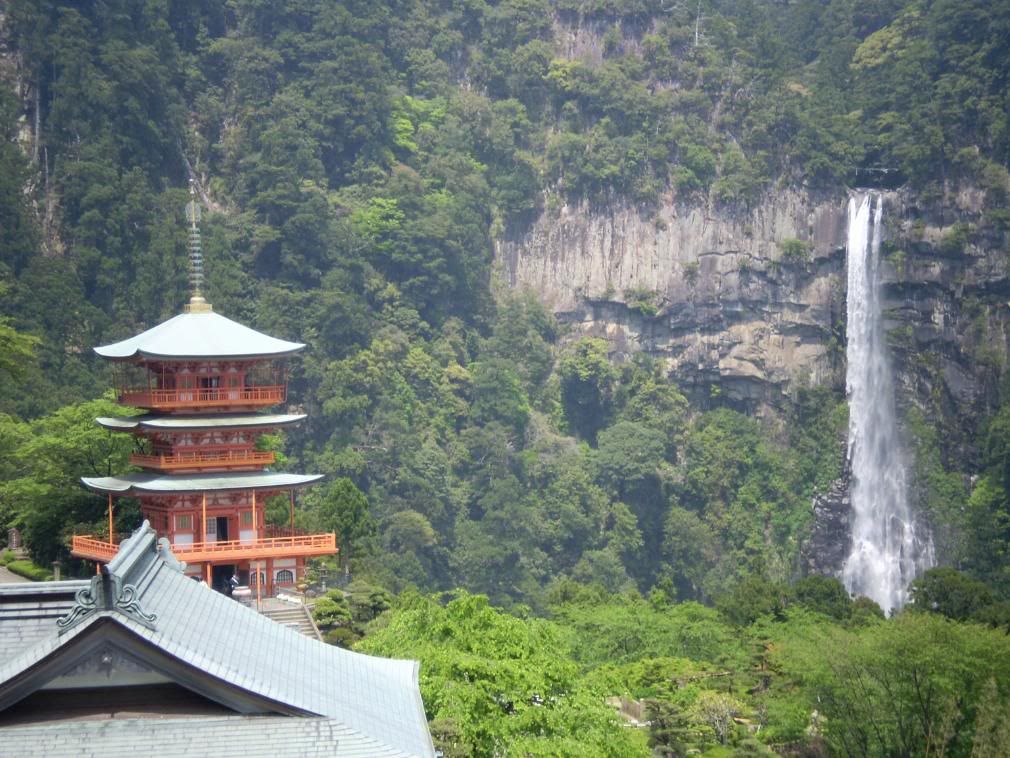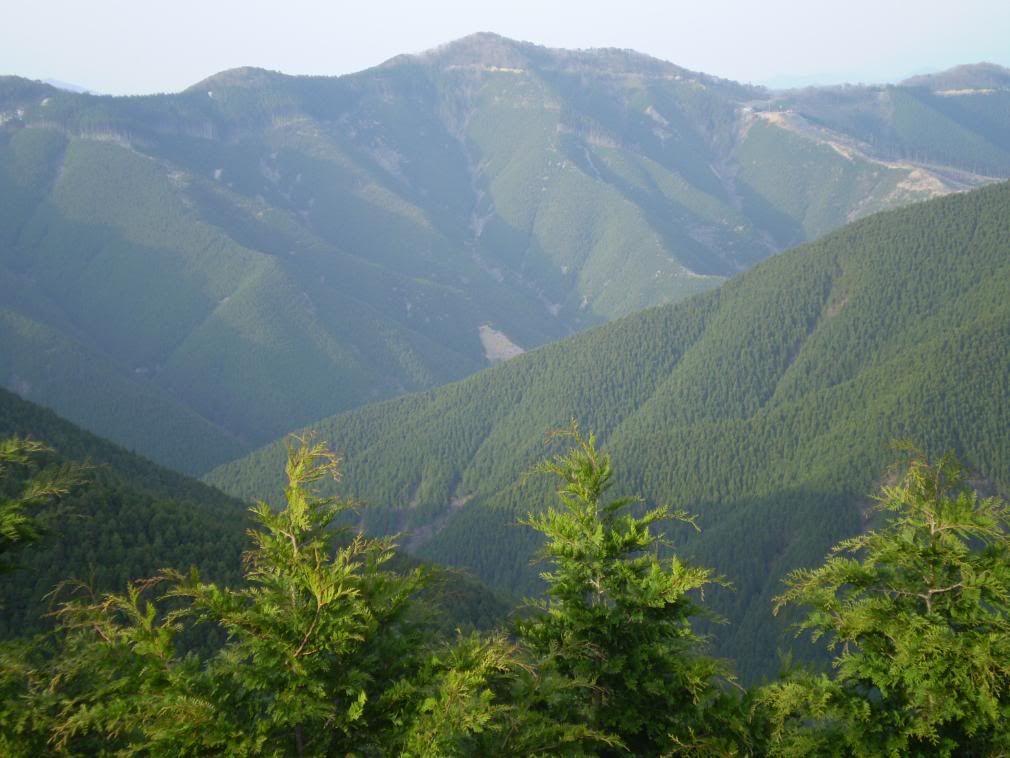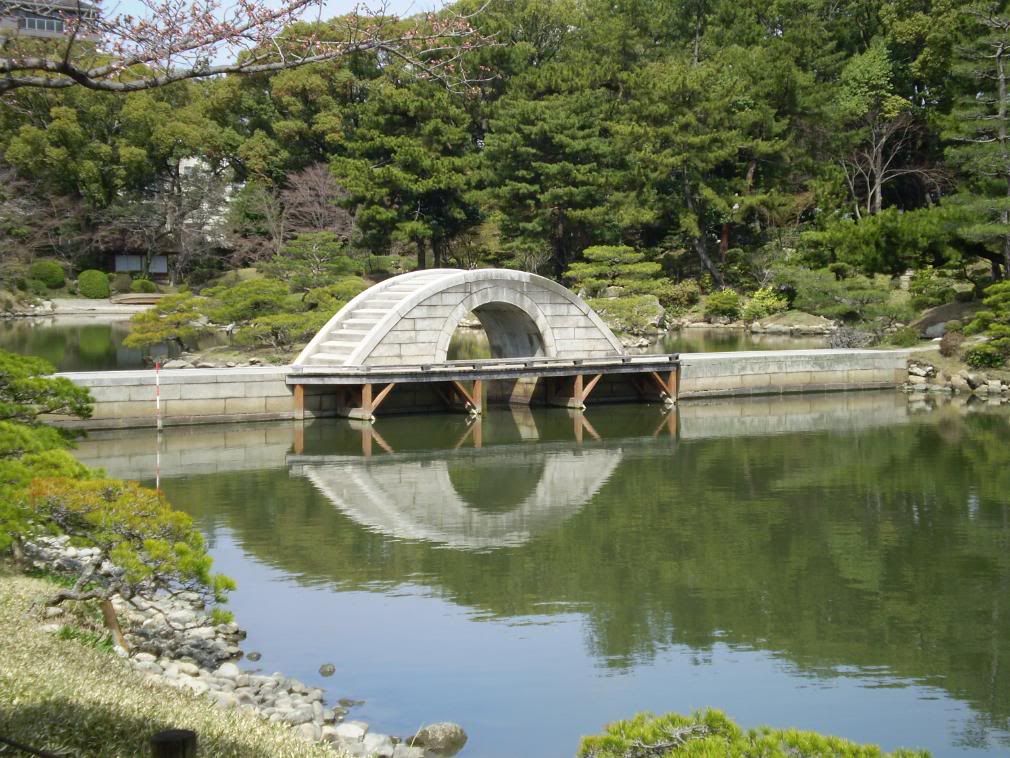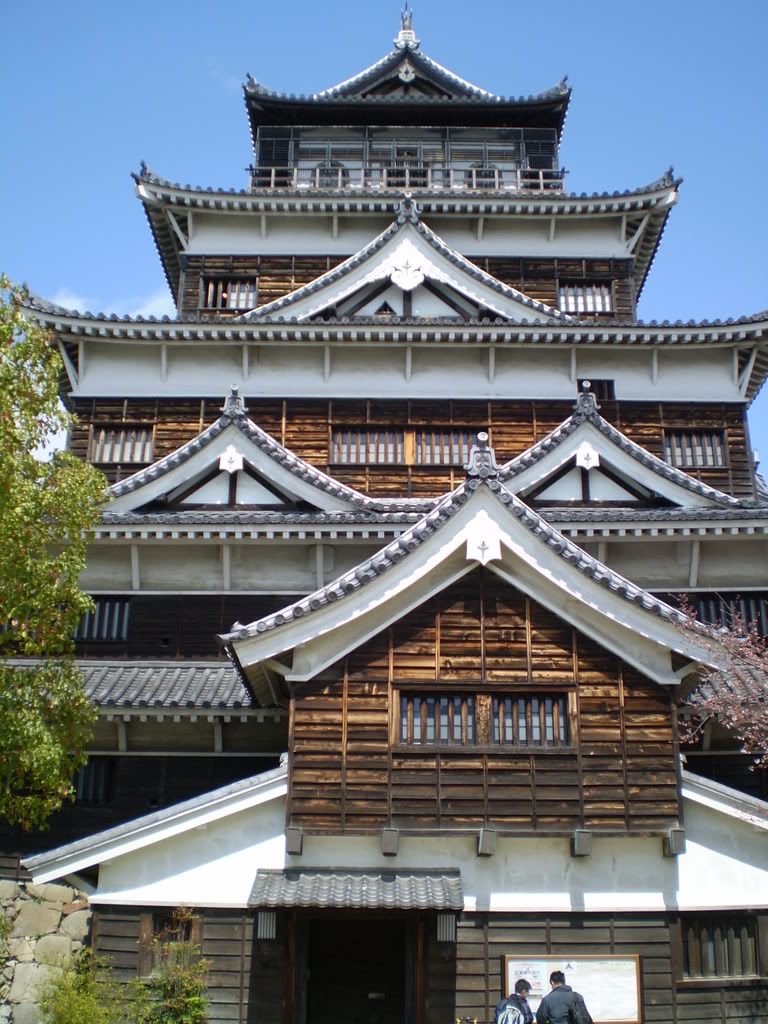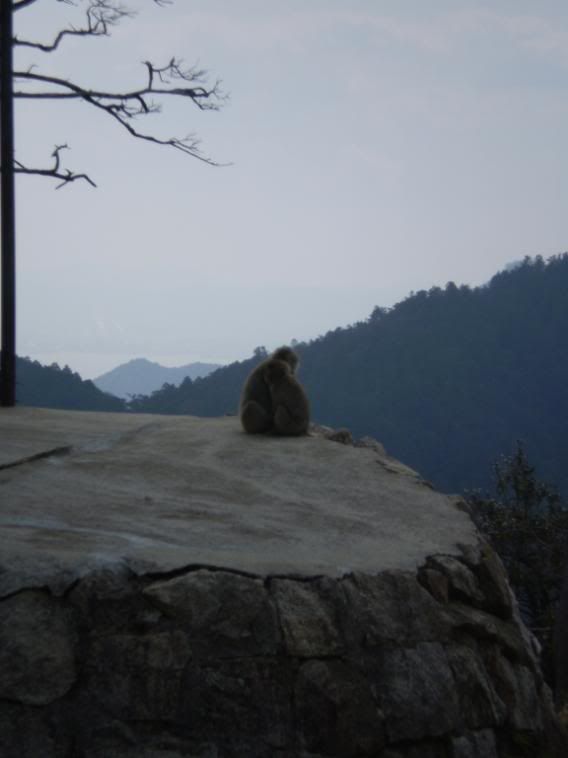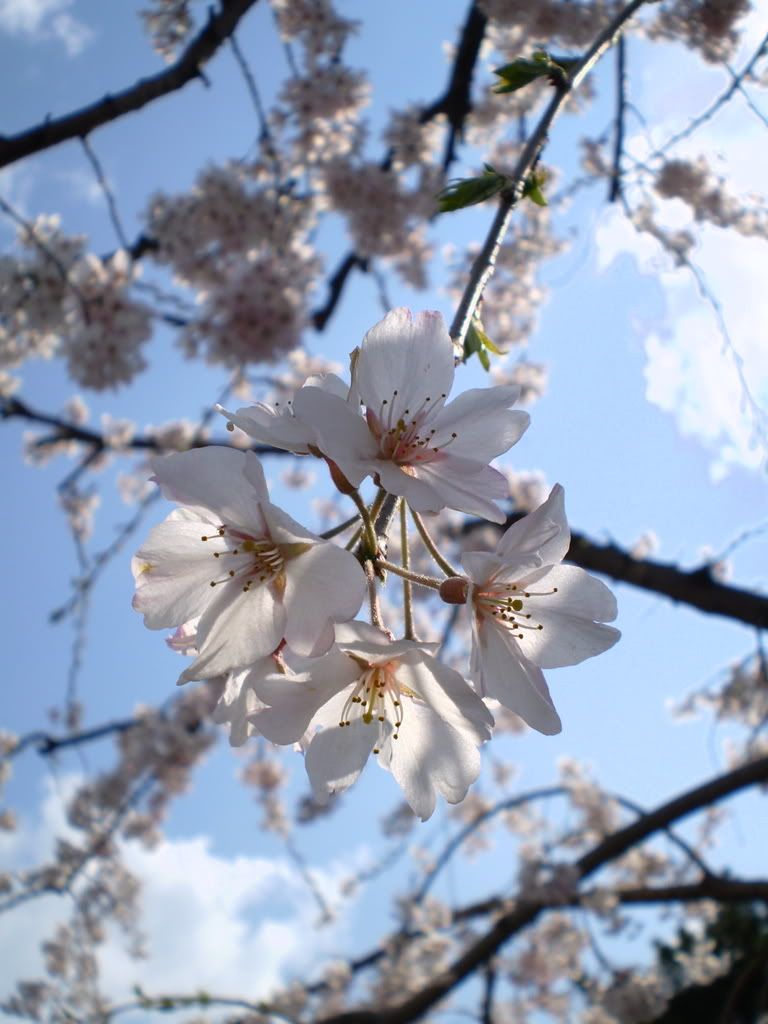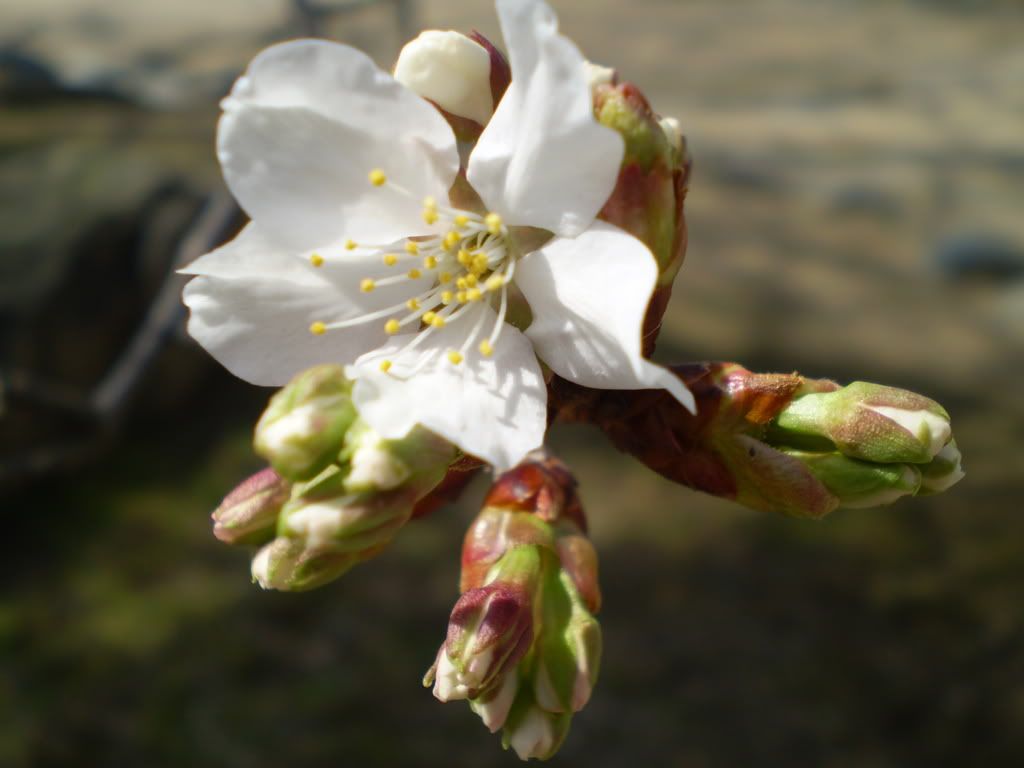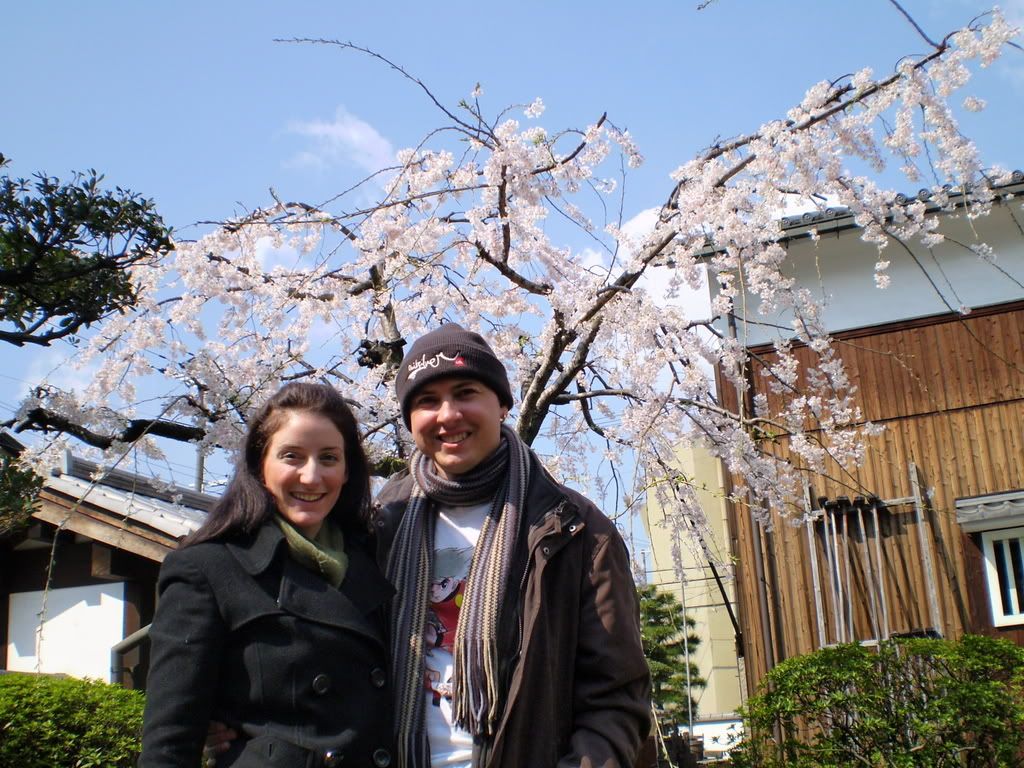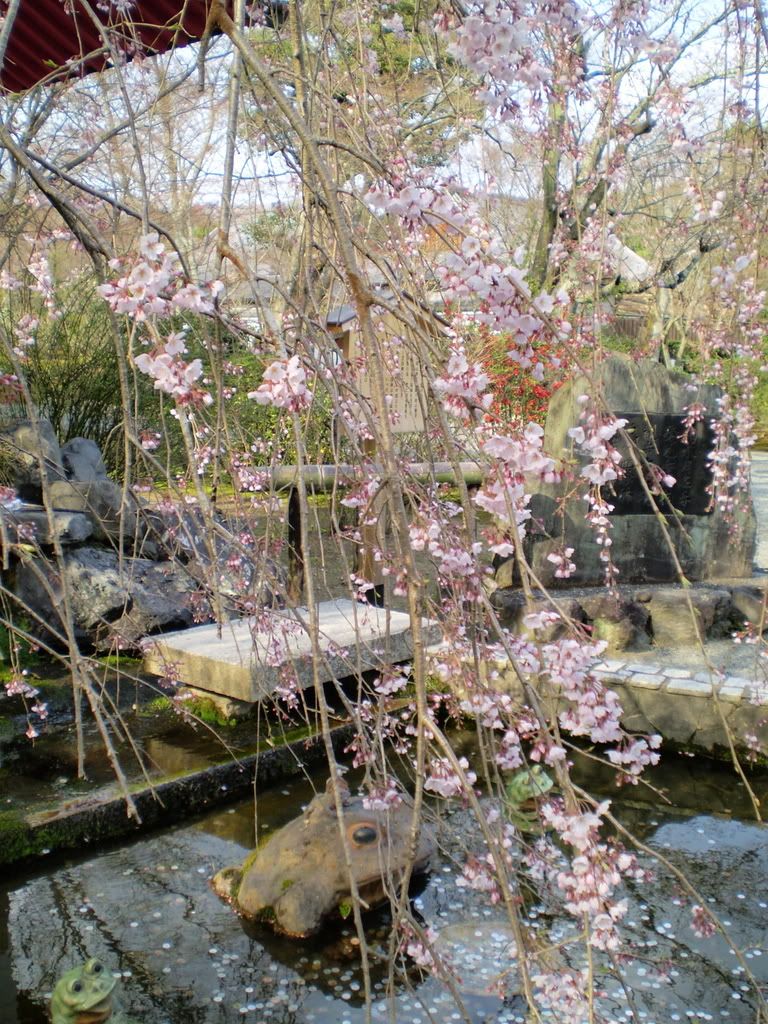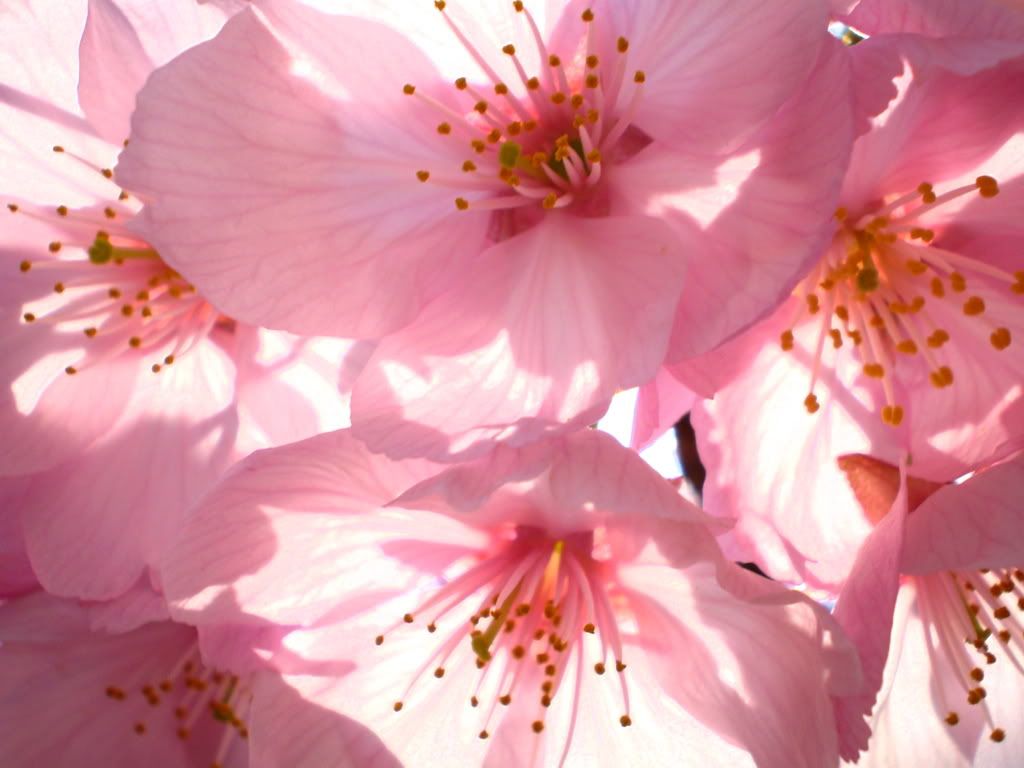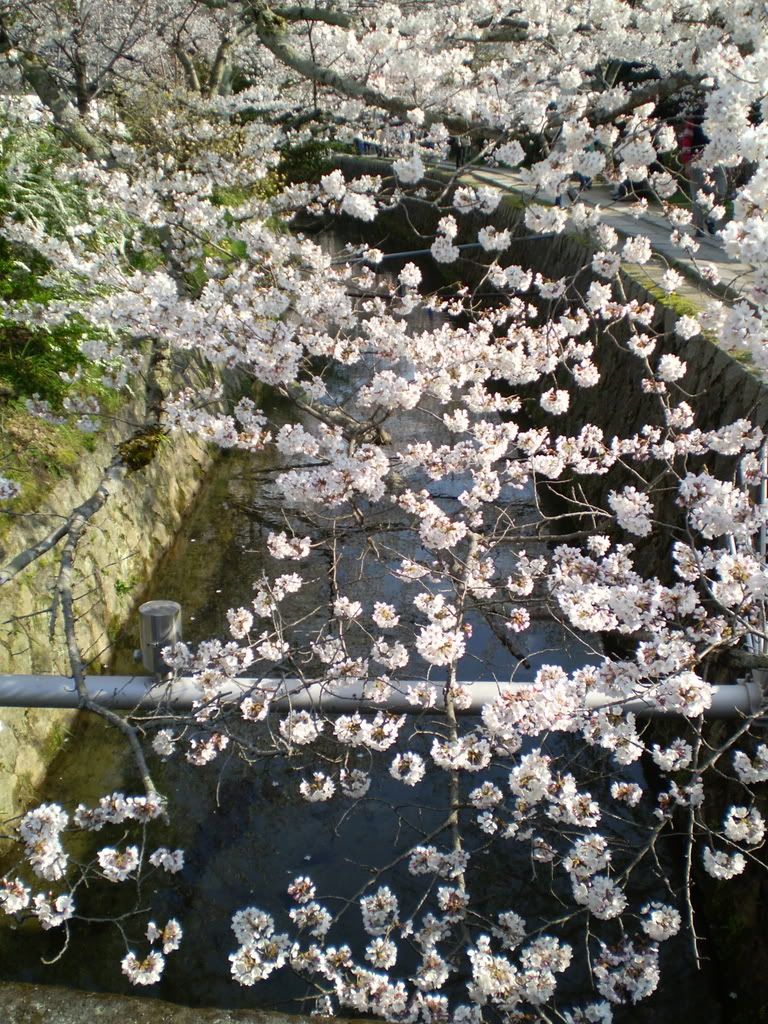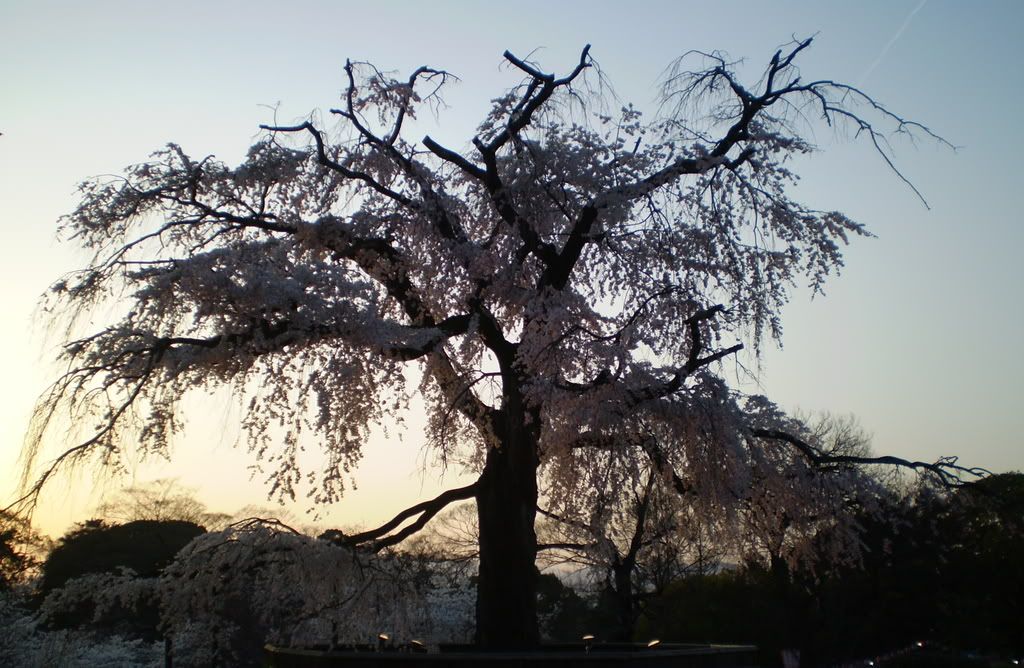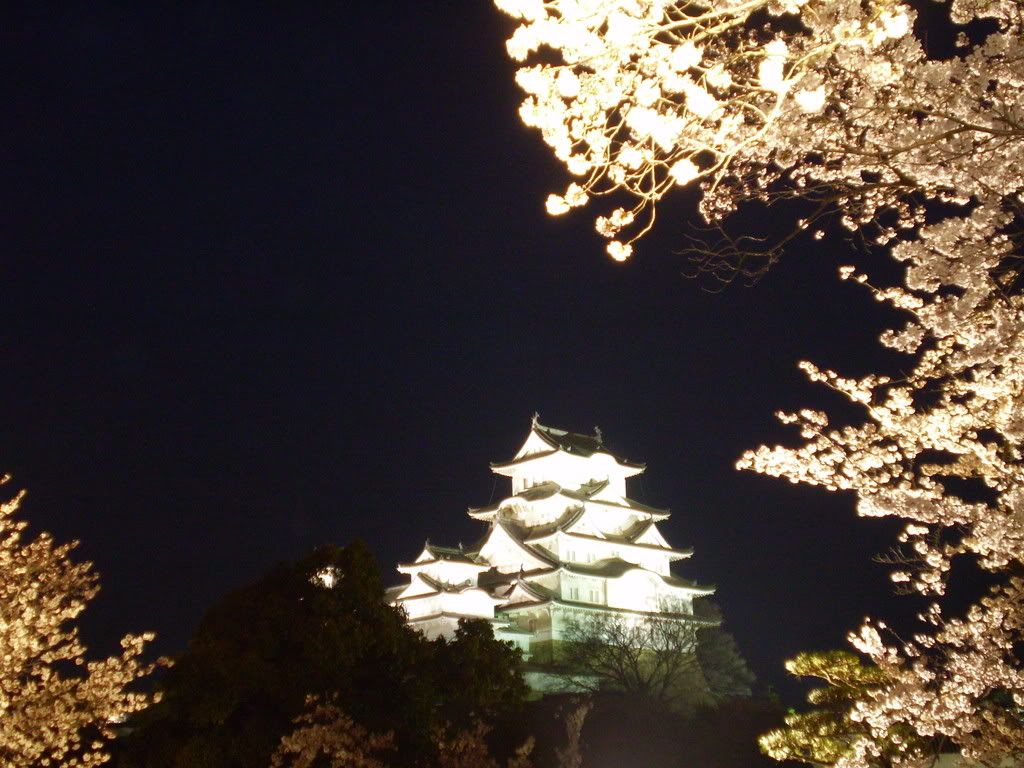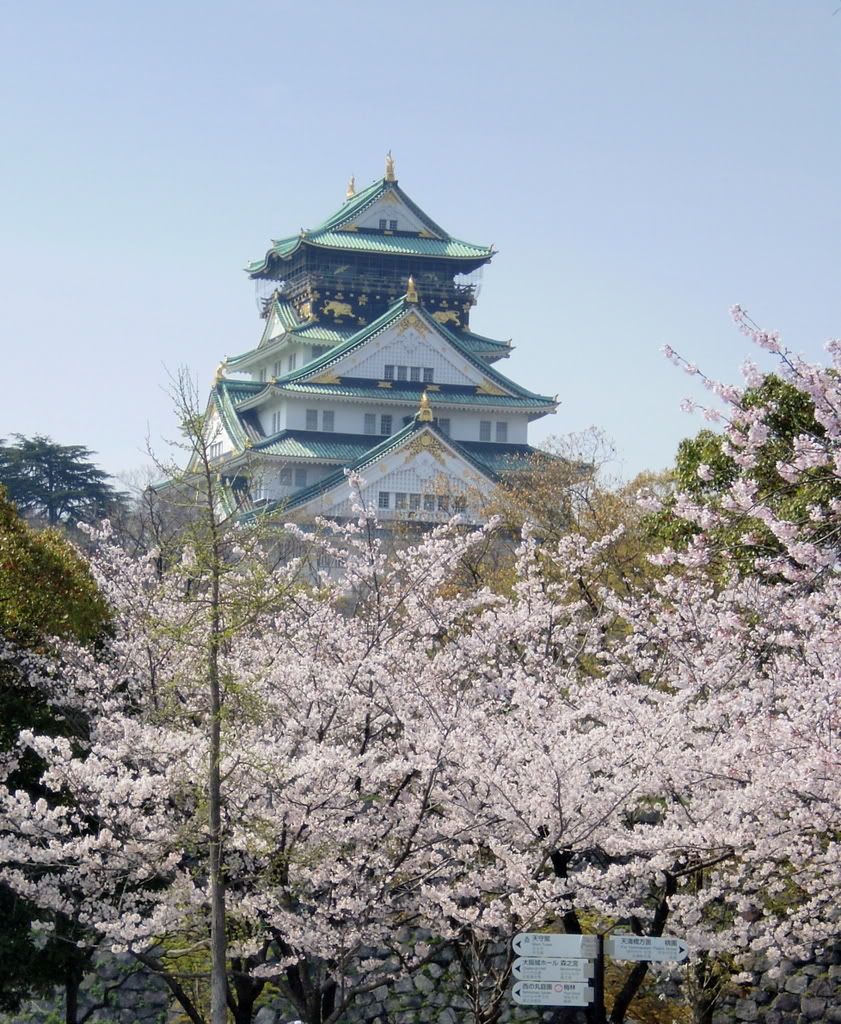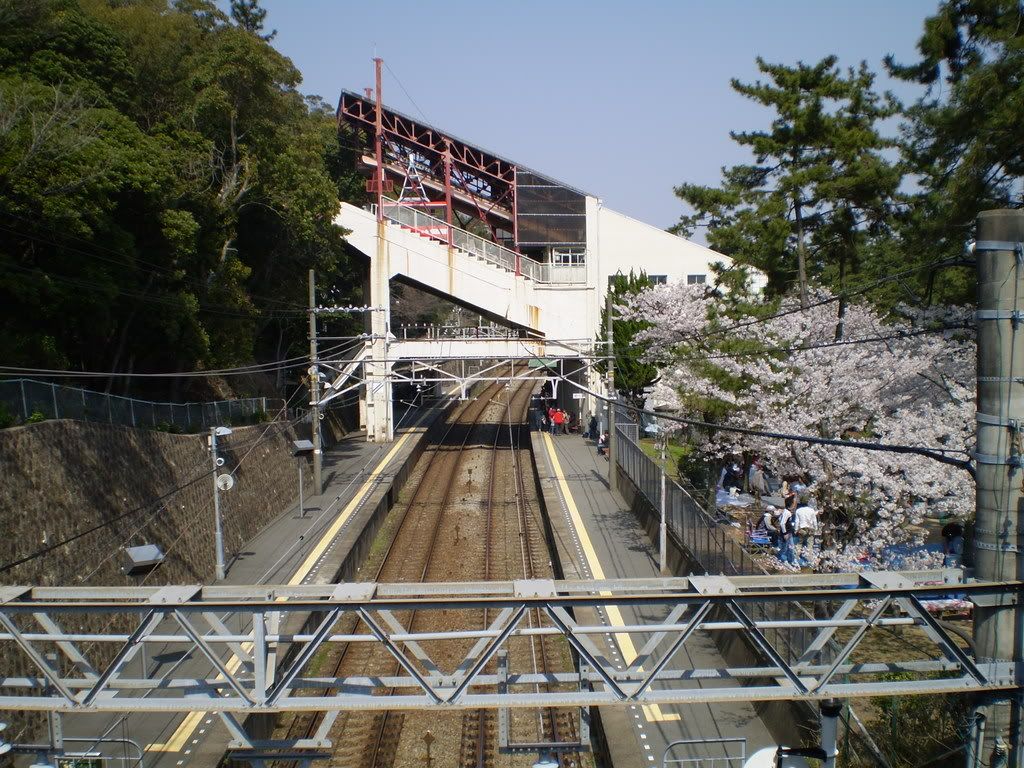Tuesday, December 16, 2008
Sunday, December 7, 2008
The Science of Japan: Is it really dangerous to use your mobile phone on the train?
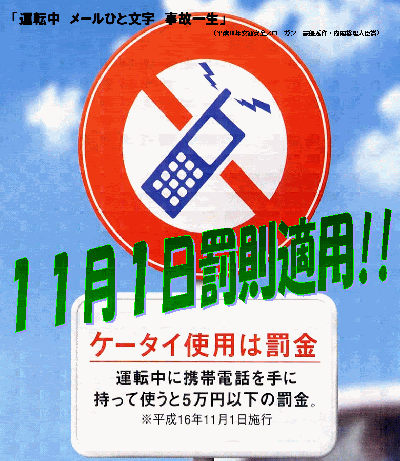
Why is mobile phone use proscribed on public transport in Japan? Well, for one thing, it’s considered “rude” (as is talking at the boisterous volume to which we barbarous Westerners are accustomed) . . . and over here that should be the only reason you need. But it is also believed that the radio waves emitted by cellular phones can interfere with heart pacemakers, and therefore passengers are asked to switch their phones off in the vicinity of priority seats. Is this concern justified?
It is true that mobile phones emit electromagnetic energy. Many things do, including the Sun and the earth, as well as televisions and radios. Electromagnetic radiation is non-ionizing, meaning that it does not have sufficient energy, unlike ionizing radiation such as UV rays, to detach electrons from atoms and cause tissue damage. Exposure to very high levels of electromagnetic energy can cause tissue damage, according to the Australian Radiation Protection and Nuclear Safety Agency (ARPANSA), but such levels would be well above what the general public encounters (in Australia at least; I can’t say whether it holds true for Japan). And worries about the risk of developing cancer from long-term exposure are generally what inspire people to protest the installation of towers or the use of handsets by children, but the jury is still out on how well-founded these concerns are. Nevertheless, the risk of tissue damage isn’t the main concern on Japanese buses and trains.
Concerns about cellular phones interfering with pacemakers and implantable cardioverter-defibrillators (ICDs) are well-founded, but the nature of the risk requires a little teasing-out. The purpose of a pacemaker is to ensure that the heart beats at an adequate rate, while a defibrillator will monitor the rate and rhythm of a heart and correct it if it is beating too slowly or too fast. Both essentially work by delivering electrical impulses to the heart muscles via electrodes, which in the case of the ICD is also used to detect heart activity. According to ARPANSA, both the signal transmitted from the phone’s antenna, and any magnets inside the phone can affect the operation of implanted medical devices, if the phone is held and operated sufficiently close to the implanted device. The organization therefore recommends that phones be kept at least 15cm from the pacemaker or ICD, which can be achieved if the patient avoids storing the phone in a pocket over site of the device, or if the patient uses the ear furthest from the site of the implant when he or she uses the phone. ARPANSA also notes that electromagnetic interference from mobile phones appears to be temporary; the device can be returned to its normal operation by simply moving the phone away.
So unless you’re on a really crowded train or bus, or unless you are actually sitting next to someone with an implant, it seems that he or she is unlikely to be harmed by your using your phone. Still, the host of the dinner party is unlikely to be harmed by your refusal to remove your shoes—unless you have been wading in toxic waste—and yet in the interests of maintaining peaceful and harmonious relations with your fellow creatures, and not looking like a complete and utter jerk, you are best advised to do as your host requests and take off your shoes. It is a good idea to do likewise on the train (put the phone away, that is; you can keep your shoes on), and save yourself much embarrassment—not to mention the ire of the ojiisan and obaasan, who can be far more intimidating than their diminutive appearance would suggest!
Matthew Stott, IANAS*
(*I Am Not A Scientist)
Wednesday, October 22, 2008
Saturday, October 18, 2008
An Autumn Attack
The preying mantis has a nifty camoflague, its green stick-like form lets it go unnoticed amongst the stems of many shrubs. An attribute this preying mantis had fully exploited, for when I opened my eyes I found it climbing out of the flowers and onto the balcony rail. Excited by its alien-like shape I rushed to get Matt and the camera.
Armed with our camera, and the desire to document our visitor, we ventured ever closer to the preying mantis. Happily we took close-ups of its almost translucent body and were filled with glee as it turned its head to pose to give us that coveted frontal view. So intense were we with our camera work that we failed to notice the interest our model had in us.
At lightening speed it launched itself from the rail to the camera, which Matt abandoned in an empty flower pot before quickly retreating to the safety of the closed screen door. Our hearts beat wildly at the unexpected attack, and a few minutes later we went to retrieve the camera.
I glanced at the camera in the pot and the preying mantis was nowhere to be seen. I opened the door without caution only to find those little alien eyes staring directly at me! The preying mantis had scaled the wall and was waiting for our return. Before it could launch another attack, I quickly closed the door.
Not to be beaten by an insect only the size of my middle finger, I fetched the broom, opened the door slightly and flicked it away from the door, which was again quickly closed.
Again it sat perched on the rail, and still the camera sat in the empty pot. We waited till its attention was directed away from the house, only then did we dare to retrieve the camera. At the sound of the door opening, it immediately turned to attack position . . . but it was too late. All that was left to attack was an empty pot plant and a closed door.
Tuesday, October 14, 2008
Tuesday, September 30, 2008
I Know What We Did Last Summer
Our little group of friends has devised two methods of coping with this horrid weather: the beach and karaoke. The beach speaks for itself as a solution. It’s a stretch of sand to get hot and sweaty playing Frisbee on, and the great big ocean to sink into to cool off in. However, as we were initially unaccustomed to Japan’s more rocky seashore, we managed to cut out feet during our first Frisbee playing marathon (we played continuously for about 4 hours). Yet, no minor cut could deter us, so we got ourselves some beach clogs and have been a-beaching every weekend for the past month. Special mention should go to Matt and Goran for their excellent Frisbee skills!
Click image to see slideshow
Karaoke is not such an obvious solution to the summer’s humidity, but when you consider that it takes place in the air-conditioned comfort of a karaoke booth, its appeal becomes obvious. Karaoke is particularly fun if it has been proceeded by a wine and cheese affair, which, three weeks ago, is exactly what happened. Luckily
Click image to see slideshow
In short, in the company of good friends, any weather can be made into the backdrop for great fun.
Sunday, September 14, 2008
"You can leave your apart-ooo . . ."
The following is a production of Shimane AJET and features Emily McBride, a member of the WA contingent who came over to Japan with us in August 2007. Enjoy.
Thursday, August 28, 2008
A belated farewell
But we have lost some dear friends along the way. Don't worry--nobody died. Nor did we have a falling-out with anyone. (Actually, I was going to open this post with another Nietzsche quote: he has this great aphorism about how in the grand scheme of things the friends you make will always have been your friends, even if you had to become enemies with them on earth. I like it, but it doesn't apply here. The part about being enemies, I mean. (It's late.)) But three of the friends we've made on the JET programme departed in August to two of the four corners of the earth: Michelle and Cassie to Perth (so we'll see them again eventually), and Dan K to the United States. And I've been putting off writing this post for the usual reason: I wanted to include my usual slideshows of sixty-odd photos, but this generally takes hours owing to the arduous process of Gimp-ing (I'm referring of course to the photo editing software, not the unfortunate leatherbound soul in Pulp Fiction) and uploading the images we want to use. Not that you guys aren't worth the effort--but I do have to get up in the morning. Plus if you're on Facebook you'll have seen pictures not unlike those I intended to post, including karaoke photos. Karaoke's awesome, but readers of this blog will have seen enough pictures of gaijin singing the Aladdin theme song to get the message. Anyway, where was I . . .?
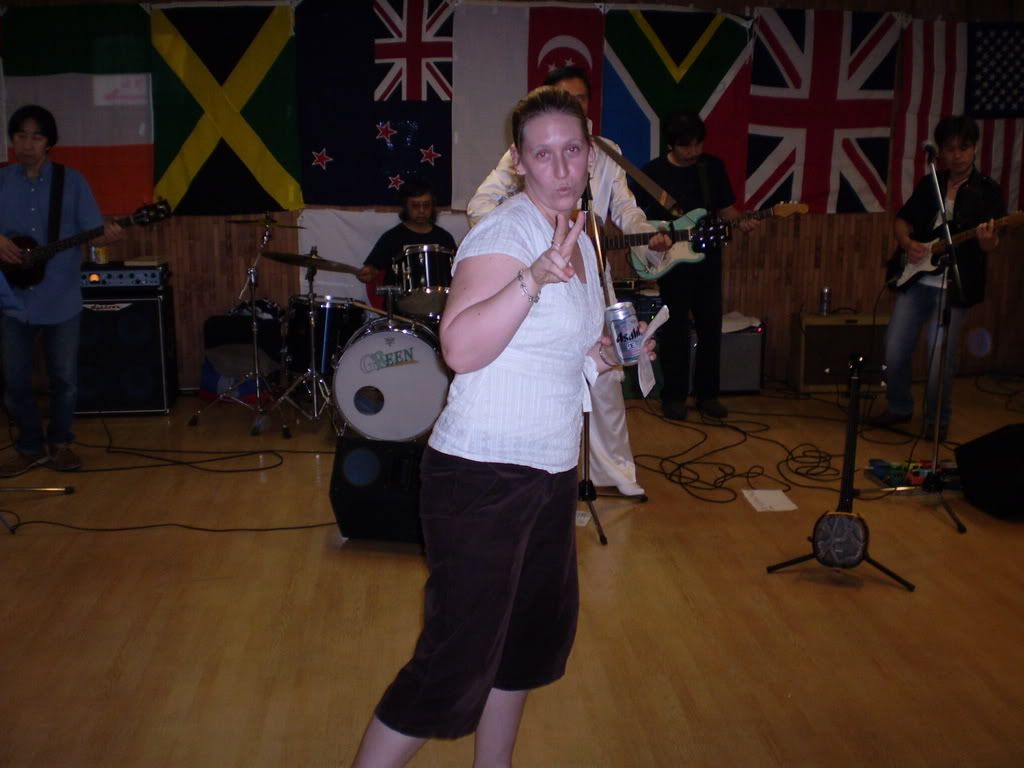
Cassie and Michelle were members of the 2007 contingent of WA JETs. Poor Michelle--she came half way around the world from a country town in WA only to be placed in an even smaller country town in the hills of Hyogo. (This, I believe, factored heavily in her decision not to re-contract. Oh yeah, and she got engaged too :).) She's a high school Japanese teacher by trade, and on our very first day in Japan she rescued a very disoriented Matt and Emma from the Akihabara JR station. In karaoke she sang like an angel . . . almost as good as Emma! So devoted was Michelle to the team that she thought nothing of making a three hour journey to Kobe or Osaka to attend festivities, and I think we should have made more an effort to visit her in Aogaki, though Emma and Cassie did just that shortly before Michelle's departure.
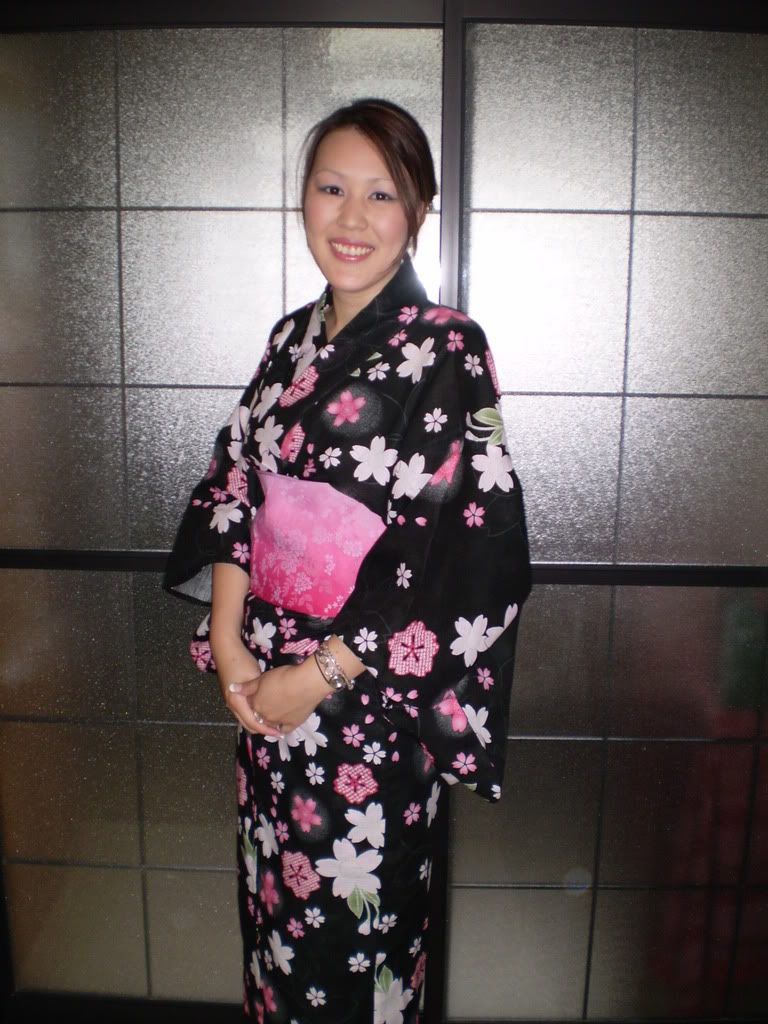
Cassie is a shop-a-holic by trade, but she also moonlights as a primary school teacher (we all have our peccadilloes). I'm a typical Australian male when it comes to shopping--drag me into a women's clothing store, as a very exasperated Emma will tell you, and I suddenly become autistic like Dustin Hoffman's character in Rain Man, and getting me to offer a useful opinion on a dress or skirt you may have your eye upon is like getting a cat to hum Bach's "St Matthew Passion." So Emma really appreciated Cassie's companionship. UPDATE: Oh, and did I mention the scrapbooks? I didn't, did I? 'Cause I'm a rude bastard. Cassie, being the scrapbooking queen that she is, made for us and for a few other ALTs beautiful picture books of the year that was. She has a post about them on her blog if you want to see what I'm talking about. And both of them--Cassie and Michelle--were really good for a yarn, and two of the most down-to-earth people you're ever likely to meet. (And Cassie--it's safe to admit this now that you're back in Perth: I was secretly watching Project Runway with you and Emma.) We miss them, but they're Perthies like us, so we'll see them again soon.

Dan K is from the east coast of the United States, but shall remain an honorary West Australian--insofar as it lies within the power of we WA JETs to bestow him with that status. He lived in Goran's apartment building in Miyodani, and when the two of them first met at (I think it was) Yashiro, it was (platonic) love at first sight. In fact . . . boys, the following YouTube is dedicated to you:
Seriously, with their powers combined these guys were the very definition of genki, and could be relied upon to be the life of any party. Speaking of parties, Dan's a mad-keen Obamaphile, and that earns him an automatic tick in my book. And he's been Emma's hero ever since he was able to secure for her an e-book reader she's been chasing for months, a Sony item which for some reason is unavailable in Japan, and which can only be purchased within the US. (That's like Australia manufacturing Vegemite solely for the Bhutanese market.) Nice work!
Thanks for sharing this experience with us, guys . . . it has been an honour to know you. Auf Wiedersehn!
Monday, July 28, 2008
Fuji

-- Friedrich Nietzsche, The Wanderer and His Shadow
Australia is the oldest, driest, and flattest continent on the planet. Most Australians know next to nothing about mountains and mountain-climbing, having never seen them before, and most Western Australians know even less. For those of us who grew up in Perth, our idea of a mountain range is an escarpment known locally as the “Darling Range”, rising as much as 300 metres above sea level in some places, a greenish blur on the eastern horizon. Our idea of mountaineering involves hauling a full esky over a sand dune or across a sloping lawn. So it’s fair to say that since we learned of our acceptance into the JET programme last year, Emma and I had our hearts set on climbing a real mountain, the biggest in Japan. And therefore our journey to the summit of Mt Fuji really began in Whitford City Shopping Centre (of all places) in the weeks prior to our departure from Australia, where we acquired cold-weather gear and, more importantly, decent hiking shoes. The intervening year has been spent in anticipation of the day when those shoes, already road-tested in places such as Mt Rokko, Mt Shosha, Sumaura, and the mountains of Wakayama, would tread the slow trail to the top of Japan’s most iconic landmark.
Of course, kudos must go to Emma and her go-between Shibata-sensei, without whose careful planning--including an extensive array of Google Map printouts spread out across our living room floor the previous weekend--this trip would not have been possible.
Day 1: Kawaguchiko
The bulk of our party converged at the bus station in Mishima: Emma and me, Shibata-sensei, Amanda, Suzie, Aimee, Dan C, Dan K, Louis, Chris Molina, Steven, Wendy, Case, Sean, Goran and Kin. (Dan K’s friend John, after what sounded like some arm-twisting, joined us later in the evening.) We were taken from Mishima to Gotenba by the angriest bus driver in Japan: he yelled at us gaijin for frivolous bell-pressing (when the actual culprit was an elderly local who had moved too slowly to reach the door before the bus pulled away from her stop), and his mood was not improved by two idiot motorists who were desperate to learn the meaning of “give way to the right” the hard way. Eventually, and hungrily, we reached the mountain lake resort of Kawaguchiko, and after a brief trip around the lake we found our lodgings for the night: a kind of Japanese bed-and-breakfast without the breakfast.
There amidst the mountains we did the Australian thing and enjoyed a barbecue, and watched the sun set over fields of blueberries. (Sucks to be you, doesn’t it?)
The ascent: Fujiyoshida to the 7th station
We’d planned an early departure on Sunday morning, but as there were no buses running at that time we bribed the proprietor of the B&B to drive us all to Kawaguchiko station, from where we made our way to Fujiyoshida at the base of the mountain. (We also parted ways with Shibata-sensei, who had decided not to climb the mountain.) It was at this point that about 5 members of our party decided to take the bus to the 5th station and climb from there; the rest of us started walking. I remember, looking ahead at the mountain, faint but looming, two thoughts occurring to me: (a) “We’ll be at the top of that by sunrise tomorrow,” and (b) “How the hell are we going to get there?” (The "Mount Doom" chapter from The Lord of the Rings also entered my mind.)
Much of the climb from the base to the 6th station was spent in cool and pleasant forest. There were a few surreal moments—-coming suddenly out of the bushland upon a noisy expressway, watching a team of rollerbladers skate up the hill, and being overtaken by joggers. At a place called Umageshi, a name which means horses can go no further, though that would fail to account for the horse droppings we found later on beyond the 6th station, some kindly old ladies beckoned us to their hut to enjoy some free o-den, and to have our water bottles filled. (I guess they were volunteers of some sort.) In the vicinity of the 5th station, which we somehow managed to bypass, a thick fog descended upon the trail, and we knew we had reached the clouds. After a late lunch at the 6th station, where Emma and I bought climbing sticks (a.k.a. "Fuji sticks," which can be branded at each station and kept as a souvenir of the climb), we passed beyond the clouds and, for the first time, caught a clear glimpse of the peak, shining red in the afternoon sun.
At this point the woods were beginning to thin out. They finally disappeared at a bus station, probably 2 to 2.5 kilometres above sea level, where climbers were disembarking coaches from a route known as the Subaru Line. They were the first sizeable numbers of people we had seen since Kawaguchiko. We had reached the desolate upper slopes of Mt Fuji, rising from an ocean of cloud. Ahead, the path climbed the face of the mountain in sharp zig-zags, and beyond that, we could see the series of huts, one seemingly on top of the other, that comprised Stations 7, 8, and 8.5. Closer to the 7th station, where we would be staying for the night, we had to do some actual climbing, which is not a simple proposition when you’re hauling an 8kg backpack. (It was even less simple when we had to do it again in the dead of night.) At 6pm, we dragged our aching and protesting muscles into our hut, where a cool 7500 yen apiece got us a TV dinner, a bento for the road, and a comfortable few hours sleep inside a small cupboard lined with futons. It was remarkable to observe how much we had all bonded throughout the day. There we were, soaked from head to foot in a day’s worth of road grime and sweat, and well inside each others’ personal spaces, and nobody seemed to mind. Some of us weren't even ashamed to get semi-naked in front of our comrades in order to wet-towel ourselves clean and change into warmer clothes for the final stage of the climb; though Goran was gentlemanly enough to provide a makeshift dressing room for Kin with his quilt.
The final stage: 7th station to the summit
Whether it was the anticipation of a gruelling climb and a breathtaking sunrise as a reward, or the noisy departure of another party of climbers at 930pm, it is doubtful that any of us got more than an hour and a half’s sleep. We left the hut at 1130pm on Sunday night, and immediately proceeded to scale the steep mountain face. In the dark. My headlight, purchased for the princely sum of 100 yen, was precariously clipped to the brim of my visor. I was half asleep, and I kept knocking the light to the ground with my Fuji stick, whereupon it would break open and the batteries would fly out. I was a more than a little panicked at this stage, and needed every ounce of Emma’s moral support. Emma actually lost her headlight long before I discarded mine in disgust, but it didn’t faze her, seeing as the moon was full and there were dozens of other climbers around to light the way. I had collected my wits by the time we reached the first hut of the 8th station, and was a little more confident of not dying before sunrise. To tell you the truth, if there was any dying to be done on Mt. Fuji, it certainly wouldn’t be caused by falling off. The path was steep, and narrow, and we had to clamber over rock, but there were rope fences on either side to guide the way, and at certain points thick metal rods had been driven into the stone to assist us.
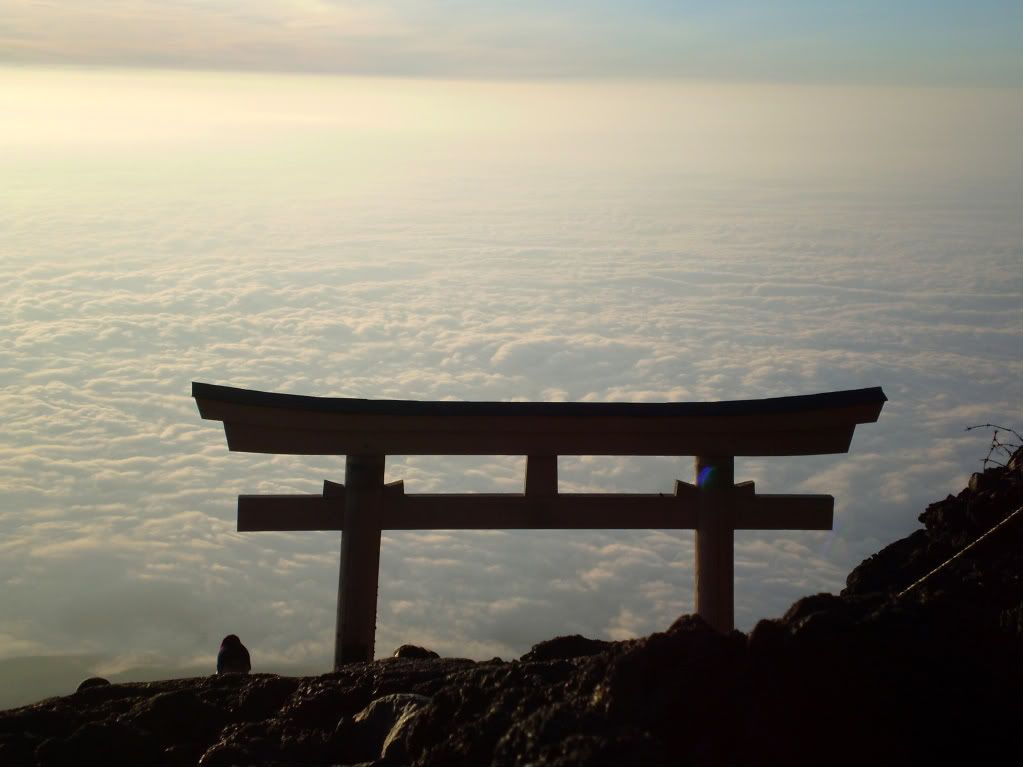
On the previous day we’d walked for ten hours, and it seemed like we’d covered ten hours’ worth of ground. Beyond the 7th station, the journey seemed interminable, and the summit seemed forever out of reach, like that neverending hallway in the movie Poltergeist. The 8th station alone went on forever, and the higher we climbed, the more climbers poured out of the huts to join our route. By this stage we’d passed Aimee, Steve, Wendy, Amanda and Suzie, and the others had raced on ahead. Somewhere along the way Emma started hallucinating—-she began to think that the headlights worn by other climbers were pretty little birds—-so we stopped and ate the bento. We were still hopeful of reaching the summit by sunrise at 4.40 am; Emma checked the map at one of the huts and estimated that we would get there at 3.50. But we began to notice how crowded the path was becoming, and when Emma pointed out a tinge of golden light spreading across the eastern sky, things were looking ominous.
Well, we saw the sunrise, but not at the summit. After the 8th station came the "Real 8th station" (all the other 8th stations were just imitating), and then the 8.5 station and the 9th station, by which point we might as well have been queueing for a ride at Tokyo Disney. It didn't make a lot of difference, anyway: the sun rising over a foam of cloud looked just as magical a few turns above the 9th station as it would have done at the summit, which we eventually reached at 5.15am. Two members of our group had already had their fill of the mountain and departed by the time we arrived, and another two had to leave early due to work commitments. The others waited for the remaining climbers to reach the summit, among which included poor Amanda, who had twisted her knee at the 7th station and still managed to complete the climb. As we were on a tight schedule, we didn't have a chance to walk the whole way around the crater; I explored the northern and eastern face while Emma rested. At 7.30, it was time to descend.
Falling down the mountain, end up kissing dirt . . .
Our map indicated that the journey down the mountain, along the Subashiri route, would take no longer than a couple of hours. Sweet. We'd have time to shop for souvenirs at the 5th station, catch a bus to Lake Yamanaka, and hit the nearest onsen. Too easy.
The map was lying.
I can sum up the Subashiri descending route in one word: Mordor. Try this on for size: we had to half-walk, half-slide down a trail of loose rock and ash (technically known as "scree"), in blazing sunshine, for six hours. It was a good thing Emma and I were wearing the surgical masks that are popular over here, because dust was getting into every orifice that wasn't covered. I must have fallen over about four times--once into a nice drift of mud that had earlier in the day been melting snow. One stretch of the track could best be described as a two-kilometre landslide. The overpriced drinks at the 6th station added insult to injury. And spare a thought for Amanda, who had to negotiate all that with a knee injury. She was assisted for most of the way and put on a brave face, but the experience can't have been pleasant. When we finally reached the 5th station, we barely had time to board the bus to Gotenba. No souvenirs, I'm afraid, unless you count the most severe case of sunburn I've ever had in my life, which to this day has me molting like a cicada, but we'd all had quite enough of the mountain by then.
Oh, and the cyborg Goran, who waited around behind us on the summit until he could find Kin, caught up with us about half an hour down, and proceeded to jog the rest of the way (with Kin in tow). How does he do it?
Would we do it again? Yes, I think, as long as time and money allows. But we did come to Japan with the aim (or hope) of scaling Fuji at least once, and now we've achieved that. And there are a lot of other places in this country we would like to explore. We are glad, at any rate, that we have such memories to bring back with us to Australia, and that we were able to share this experience with good friends.
Thursday, July 17, 2008
Vale Nagata Shōgyō
As you can imagine, the classroom dynamics at a commercial high school are very different from a normal senior high school, given the diverse ages of the students as well as diverse levels of interest in learning English. Last year, I taught a pretty wide spectrum on both counts: students ranging from 16 years old to 60, some of whom were very shy, some of whom were very loud, some of whom were always willing to participate, and some of whom would sit facing sideways and listen to their MP3 players for the entire lesson (and flee the room whenever it was time to play a game). The 60-something fourth-year student was always keen to participate, and at the end of the school year he gave me a thank-you card.
This year, or rather, this term--because it was sadly my last at Nagata Shōgyō--my classes were much smaller, much more genki, and much more interested in my lessons. I don't know how much of this can be attributed to the fact that I was much more generous in doling out KitKats, but in any case the attitude of the students was superb, and it motivated me to constantly look for ways to keep them entertained and engaged. I really appreciated their willingness to work with me, rather than against me as can often happen in Australian classrooms. It's a shame that I was only able to teach them for one term.
But all good things must come to an end. The Hyogo Board of Education reduced its intake of new JETs for the coming year, which meant that it had to reallocate those JETs (like Emma and me) who won't be going home in August. Emma will be teaching at Seiryo as well as Maiko from August, and I'll be teaching at Akashi in addition to Kobe Takatsuka, which means that a different ALT will take over from me at Nagata Shōgyō from Term 2. So last Wednesday I taught my last classes. I gave my farewell speech during the staff meeting (don't tell anyone, but as I don't speak a word of Japanese I had to "adapt" an existing speech I found on the Internet), and then exchanged farewells with the students in the lessons. Both classes had prepared beautifully-decorated farewell cards for me, which was very touching. I'll miss them a lot, and hopefully I'll be able to see them next year at graduation.
Emma and I are staying with the JET programme for at least another year, but last Wednesday was a small glimpse of what returning JETs must be feeling as they deliver their valedictory speeches in their schools' gymnasiums or staff rooms, and wipe clean their blackboards/whiteboards for the last time.
Friday, July 11, 2008
The city lights are showing little sign of receding
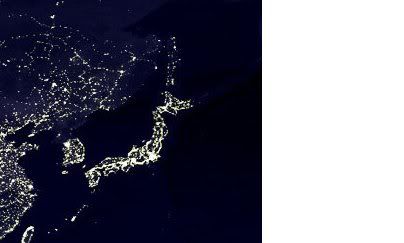
So that's why I feel so safe walking the streets at night here. Compare Australia at night, which is much dodgier:
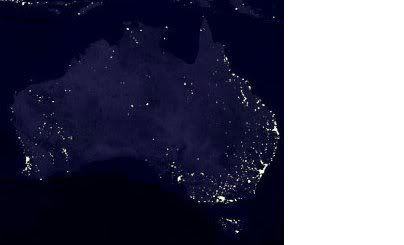
These images come from a composite satellite image of the Earth at night.
Tuesday, July 8, 2008
Monday, July 7, 2008
Saturday, June 28, 2008
Pa, Pa, Pants Man!
At least now I know I've been doing it correctly for the past thirty years. (But methinks Shimajiro could use more fibre in his diet. Cabbage never fails for me.) There's a squat toilet version also, but the English subtitles are, well, less "faithful" to the original Japanese, and given the audience of impressionable young students I've acquired of late, quite inappropriate.
Monday, June 16, 2008
Bunkasai: the day I fell in love with Kobe Takatsuka High School
Last Friday and Saturday, Kobe Takatsuka held its annual bunkasai (cultural festival), probably the biggest event on the school calendar. Bunkasai is basically an open day (or couple of days), during which students display the fruits of their club activities, serve festival food, and put on live entertainment for their families, members of the local community, and alumni. There is something of a division of labour between the first, second and third-years: the first years (ichinensei) work together in their home rooms on an art project; the second year (ninensei) home rooms each put on a couple of song-and-dance routines; and the third years (sannensei) do the catering. Because I had only arrived in Japan in August, I missed last year's bunkasai and did not know what to expect . . . and the language barrier can make it difficult for teachers to describe such things in sufficient detail. I was also at a loss as to how I could contribute to the festival, my English Speaking Society being in a transition phase having lost its only two members from last year's ichinensei, and having gained two recruits from the fresh batch of ichinensei only very late in Term 1. I did end up contributing in a small way: Manto-sensei, the English teacher who sits behind me in the staff room, asked me to help out with her ichinensei home room's Mona Lisa mosaic . . . and you could hardly notice the discoloration to the right of Lisa's hands (and we won the poster prize, anyway, so shut up). And Okada-sensei (the calligraphy teacher) framed a kanji "masterpiece" I had been working on for much of this term, and added it to the Calligraphy display. To a local eye it doubtless resembled the handiwork of a kindergartener, but hopefully it will impress all my gaijin friends.
There is a stereotype about Japanese students that suggests that they are quiet, docile and reserved. My students at both Kobe Takatsuka and Nagata Shogyo have been (fortunately) gradually chipping away at this stereotype over the past year. But last weekend, at bunkasai, they hogtied that stereotype, wheeled it out into the middle of the baseball field, set it on fire, and danced around the fire like wild Indians. I had never seen the students like this before. I never realised how much talent, how much potential, how much enthusiasm they possess. I knew the brass band were good, but in the darkened gymnasium on Friday and Saturday morning, they were spectacular. Shiver-down-my-spine spectacular, at least to my untrained musical ear.
The brass band were just the opening act, however. The main attraction were the ninensei--students whom I had taught last year as first-years in my Oral Communication Classes. What the ninensei had to do can be compared to a Rock Eisteddfod, with the exception that the home rooms were competing against each other rather than other schools. There are seven home rooms, and you might ordinarily expect that to tax the patience of a gaijin who doesn't speak Japanese, and isn't always enamoured of J-Pop, especially the saccharine, boy-band variants. But my former students (I don't teach them this year) put on a show--make that seven shows--that kept me glued to my seat from start to finish. I should perhaps have seen it coming: groups of boys had been using the Language Lab after school to practice dance routines choreographed by an Exile DVD, and while foreigners like you and I may consider that a little, well, "camp," the swooning, screaming female students in the audience that day would beg to differ. It wasn't all sunglasses, backflips and elbows, however. There were also a cappella gospel choirs, cross-dressers, mimes, and of course the Waterboys who, dancing in their swimming trunks to the strains of "Misirlou" (the theme song of Pulp Fiction), brought the house down. Hang on a minute. I taught these kids only a few months ago. Where did this come from? There were prizes given the the top three home rooms, and I thought this was a little unfair, given that they were all fantastic and obvious the result of long preparation and much dedication.
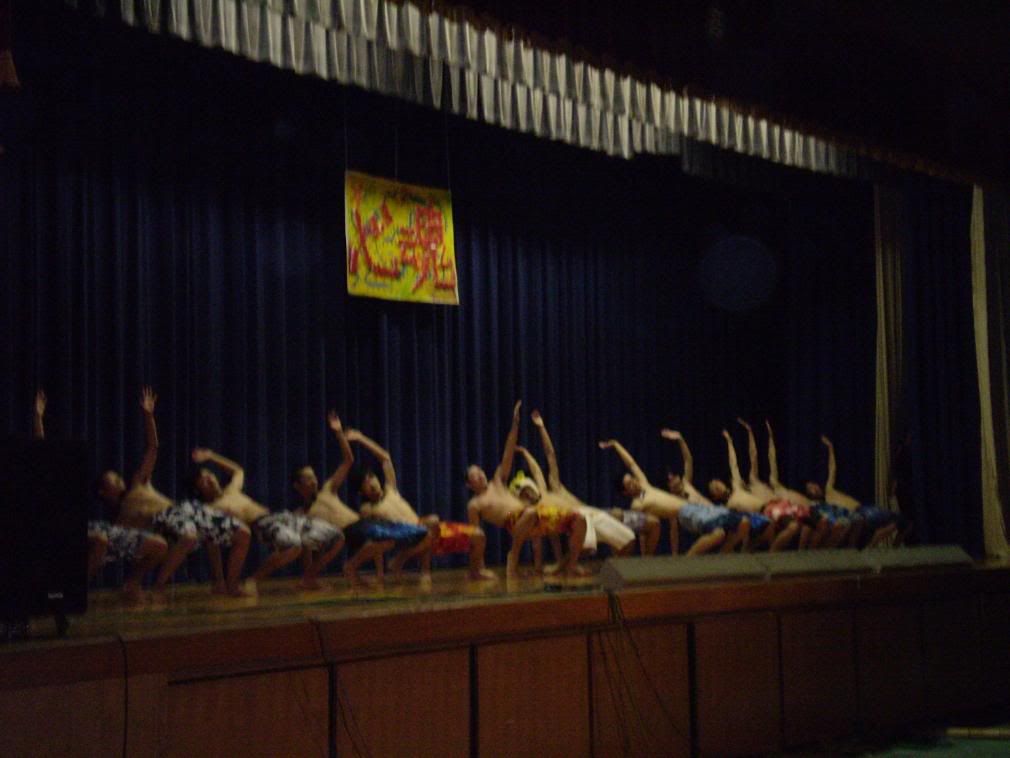 I took photos. They didn't come out very well, because my camera doesn't have a powerful enough flash for indoor shooting, but I'm posting them anyway. I want the memories. (Click the image to see a slideshow)
I took photos. They didn't come out very well, because my camera doesn't have a powerful enough flash for indoor shooting, but I'm posting them anyway. I want the memories. (Click the image to see a slideshow)Friday was more for the students and staff, though students from a local school for the disabled paid a visit as well. Saturday was open day proper, and well attended by families and former students, some of whom came up to say hello to me (they had been in my English Conversation classes last year), and very few of whom I recognised, given the local custom of dying one's hair any colour other than black the moment one graduates from high school. The sannensei had food stalls set up outside the gymnasium, and while even with my notorious appetite I could not consume everything on offer, I did keep a promise to some of my English Conversation students and bought soba meshi and takosen. Needless to say . . . oishikatta desu! Ditto the cookies and cakes sold by the home economics club. After lunch I returned to the gymnasium to see some of the school bands. I was even lucky enough to get my programme autographed by the all-girl group ANNNY, members of which formerly belonged to my ESS club.
Well, now I know what a bunkasai involves, and I'm much more inspired to get my ESS (assuming I still have one) involved next year. And I take my hat off to the students of Kobe Takatsuka for putting on such a great show. You guys rock!
Thursday, June 12, 2008
Plum Hanami, Bird and Flower Park, Golden Week
The first blog-worthy event that has yet to find its way into a post was a lovely pre-spring outing spent among the plum blossoms in Abeyama plum grove park, which is south or Himeji city and sits high on a hill overlooking the Seto Inland Sea. The preceding night Matt and I had our fun-loving group of JET pals over for a delicious nabe dinner and obligatory karaoke session. A little worse for wear, we set out in the morning for a nutritious Mister Donuts breakfast and took off on the hour and a half train and bus journey with bento boxes in hand. Unfortunately, as the day was warm and nearly cloudless we were joined by a large number of plum blossom viewers, which in itself is not a problem, but when a large number of these people are squished onto a slow moving bus which is still running winter heating, well let’s just say it’s a tad uncomfortable. Nonetheless, we survived and had a delightful afternoon under the plum blossoms over looking the sea.
The second blog worthy event happened during my parents’ visit to Japan. After enjoying a tour of a sake making factory we headed off to Port Island’s Bird and Flower Park. The advertisement for this place showed a pretty spectacular flower display, so spectacular we thought it was photoshopped. However, upon arriving we discovered there was no need to photoshop as teams of fuschias in full bloom hung from the ceiling, giant water lilies lay on the ponds and cancans soared freely around us in their spacious enclosures. I felt like I was on the set of the original Willy Wonka film or in the technicolour land of Oz.
The third blog worthy event was huge and simply can’t go without a mention. I speak of Golden Week, so named because there is a succession of Japanese public holidays, and companies often give their employees the entire week off. My Golden Week(end) was spent with the Golden Girls (the young ones in Japan, not the old cronies living in Florida). We all trooped into Osaka and met up with Aimee in Shinsaibashi the huge shopping mall. Unusually, we were not there for shopping; more girly things awaited us, namely, food, chat and massages. I am sure I don’t boast when I say I am as good as a professional at eating and chatting; however, this was my first encounter with a professional masseuse and it was gooooooood! After a lot of girly talk and a little sleep, we headed into Nara the next day. Here we encountered a rather international Colonel Sanders, plenty of deer and a whooping great big budda. Not to mention my favourite—festival food. Then, after even less sleep than the night before, we met with the boys to do some more eating and singing. This year’s Golden Week got full marks on the funness metre.
Monday, May 19, 2008
Wakayama
(Click images to view slideshows)
For the rest of the day we travelled along Wakayama’s coast making brief stops at some interesting and beautiful places. First, Tore Tore Ichiban is a fish market well known by locals for its delicious fresh fish. Here you can watch giant tuna being diced, pick your shell fish fresh from the tank and even pick up some whale meat, however, ask for a fish head to use as a table decoration and you will flatly be rejected.
Second, Engetsu rock which gets its name from the circular shape at its centre (en meaning circle and getsu meaning moon). Third, Senjojiki beach which gets its name because its wide open space seems to have room for a thousand tatami mats. Fourth, Sandanbeki cliff that bears some resemblance to southern Western Australia’s coastline. Finally, Kushimoto, the most southern part of the mainland Honshu island. Here we encountered a choral group singing traditional Japanese songs and many more unusual rock formations.
At the end of our long day we made our way to a Japanese style hotel called Arafune. Despite its less than impressive façade, the interior was newly refurbished. To Matt’s great delight not only did the hotel have hot spring baths and pool table facilities, each room came replete with Western style toilets!
However, the most interesting aspect of the hotel was the food. Upon sitting at the dinner table, we were served what can unequivocally be classed as the freshest of fish—shrimp and muscles to be precise. A tiny BBQ sat in the middle of our table, its flames licking at the open grill. What happened next could easily have been lifted from one of Peter Singer’s nightmares, for as the shrimp and muscles were placed on the BBQ they started moving! Indeed, they were still alive and trying to break free from their now searing hot shells. This intolerable cruelty lasted for about minute at about which time they settled into their endless sleep. Such an experience is almost enough to make one vegan.
The next day we returned to Kobe via mountain passes. First we stopped at Mt Nachi and walked up an ancient pilgrims path (some people hired costumes so they could walk it in traditional kimono) to the temple which also commanded an view of Mt Nachi’s magnificent waterfall.
After stopping for lunch we went through the mountains--this was the adventure part of the weekend! The road around the mountain was littered with many large fallen rocks and was only wide enough for one car despite being for 2 way traffic. Also, it was incredibly windy: the only way to check if there was a car approaching in the opposite direction was by looking in the misty mirrors. This was all good while the sun was still up, but as it began to set my go-between became anxious to get out of the mountain area and went into speed racer mode. As we careered in straight lines around sharp corners I quietly recalled all the special moments in my life and thought of all the people who had touched my life, while clutching desperately to the handrail to control my nerves. Luckily we did not need to rely on the slight metal rail to protect us from the almighty fall down the mountainside as we made it home safe and sound.
Saturday, May 10, 2008
Highlight from Week 3: Hiroshima
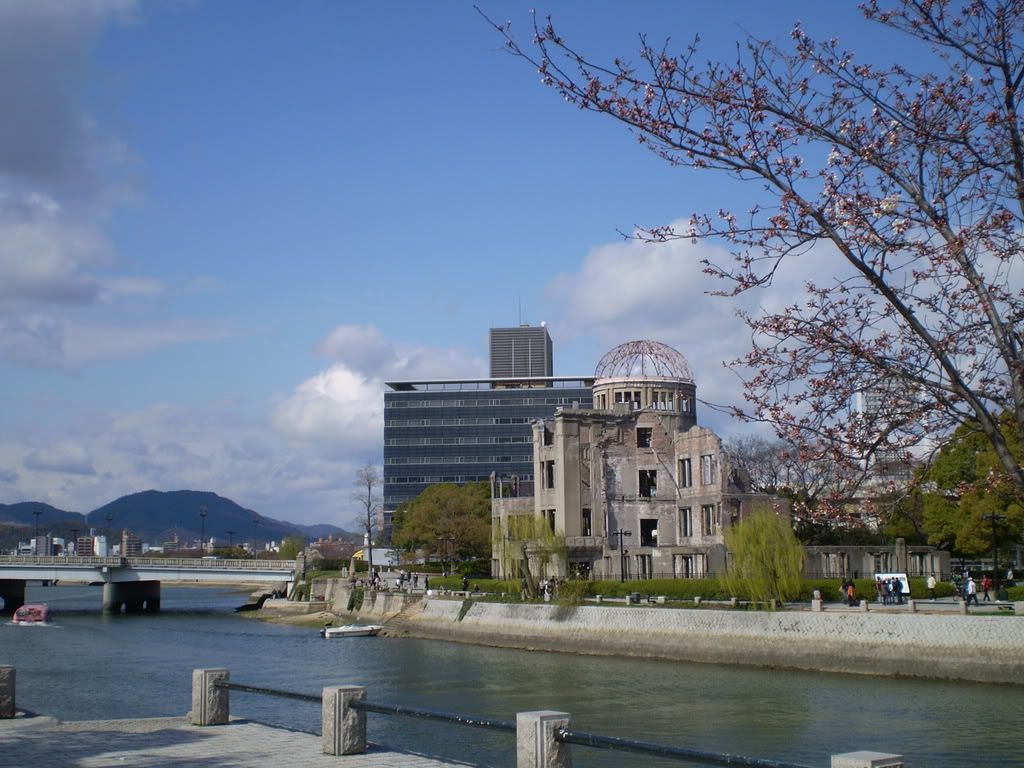 Apologies to
Apologies to Much of our sight-seeing was done on foot. We crossed the Kyobashi-gawa river west of the JR station, and made our way to
After lunch under a grove of cherry-blossoms, we walked further west to
(Click for slideshow)
From the Castle we walked south to
Our flashy hotel, the Grand Prince (no slideshow)
We ate dinner at Okonomi-mura, which is a complex of okonomiyaki stalls housed on two floors of a building in the Shintenchi district, then caught a tram from the station to our hotel down by the harbour. In defiance of hotel policy we smuggled in conbini food for breakfast, rather than taking out a mortgage for the privilege of eating in the hotel dining room. The next morning we took a ferry from the hotel to Miyajima.
Miyajima (Click for slideshow)
I was glad to return to Miyajima, because on our last visit we arrived later in the day, and I wasn’t able to climb the 500m+
(Click for slideshow)
Sunday, May 4, 2008
Hanami
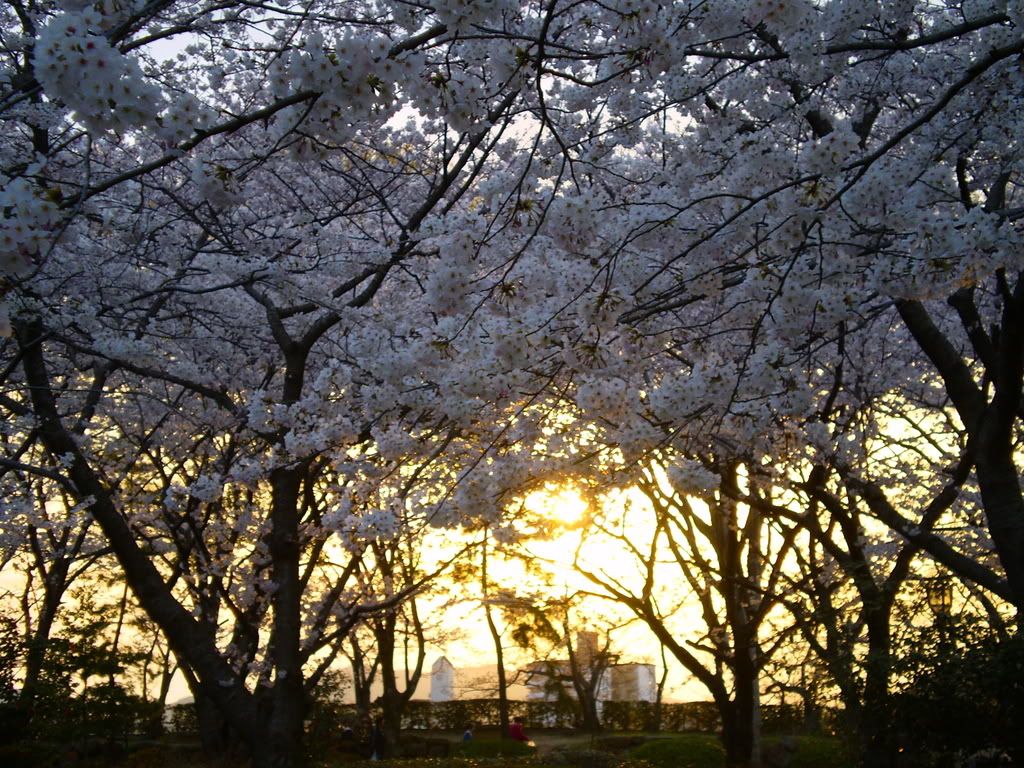
This is going to sound awfully clichéd, but have you ever been somewhere and felt as if you’ve stepped into a fairytale?
Through summer and autumn you don’t even notice them. They’re just trees like any other trees. And, like any other trees, they strip themselves bare of their leaves in the winter. Just ordinary trees.
And then . . . a single petal. A single blossom, half-glimpsed, perched on the end of a twig. The tourists queue to capture the memory on film. Within a week, the cherry blossoms have spread, like a rumour, to the four corners of Kansai. Standing ancient, majestic and alone at
And beneath the canopy, and beneath the evening blue sky that can be glimpsed between the petals, a carpet of blue tarpaulin, upon which the locals gather to look at the flowers, and sing karaoke (badly), with their eskies full of beer and sake, and steak sizzling on their barbecues. The Japanese have never looked more Australian.
This, my friends, is why God invented the digital camera! Click the images below for slideshows . . .
